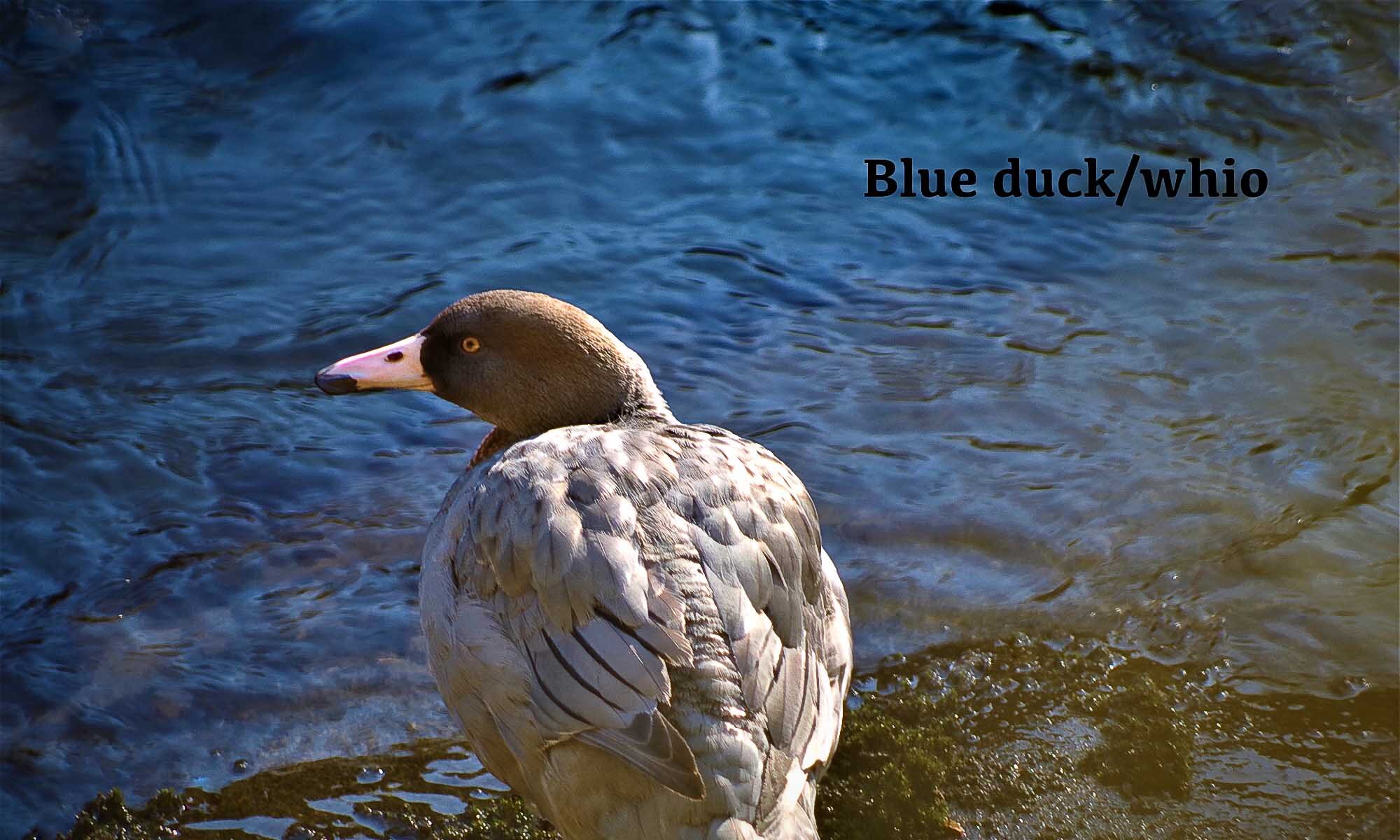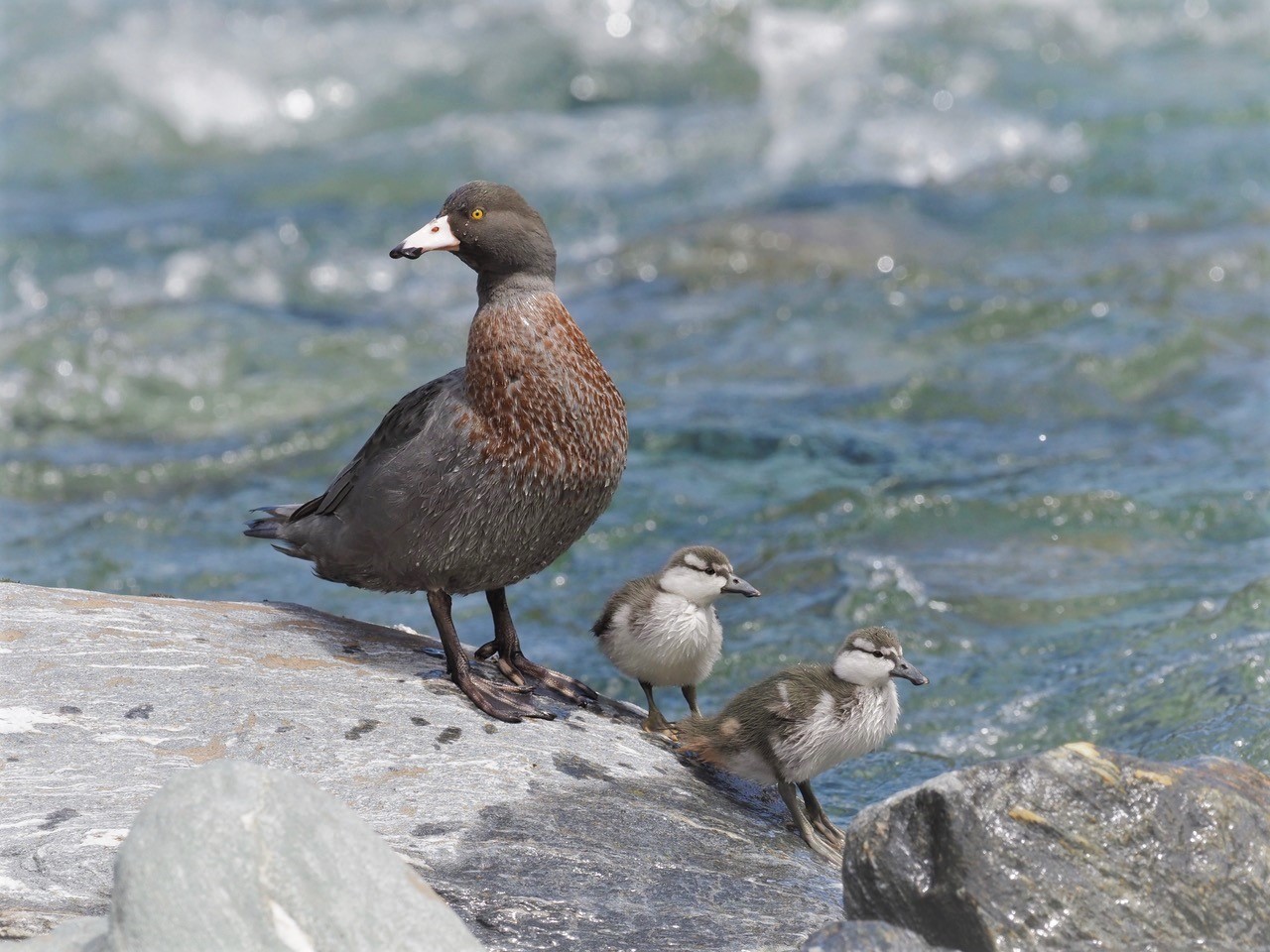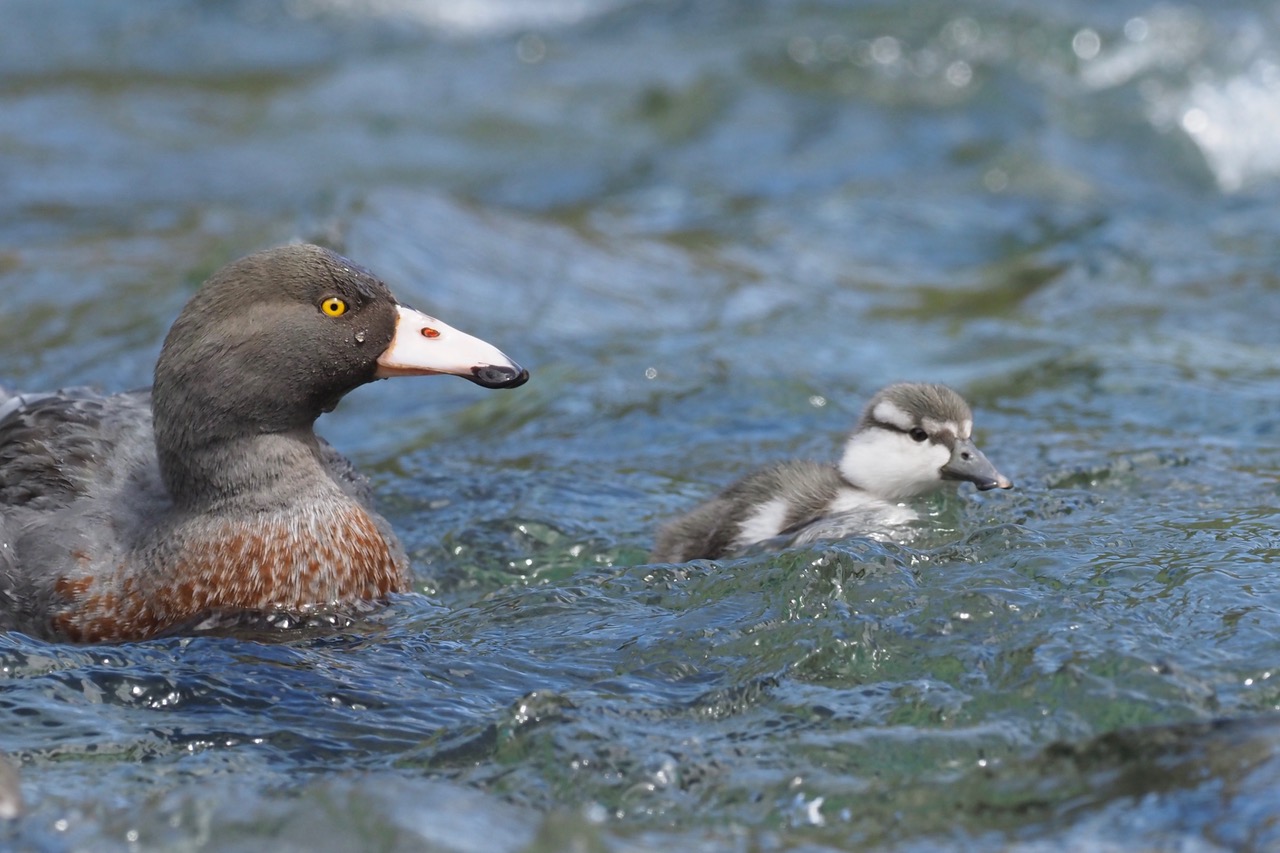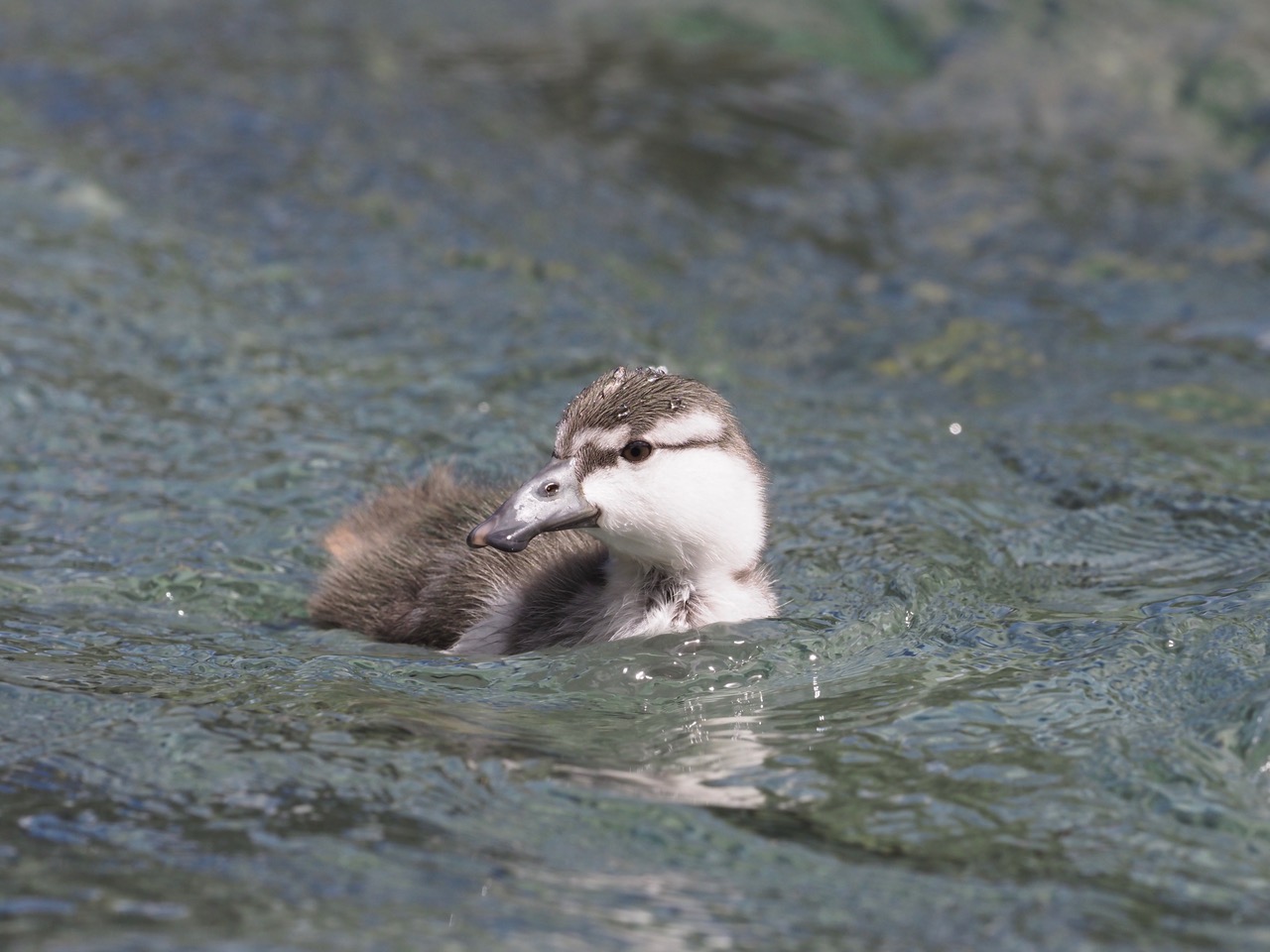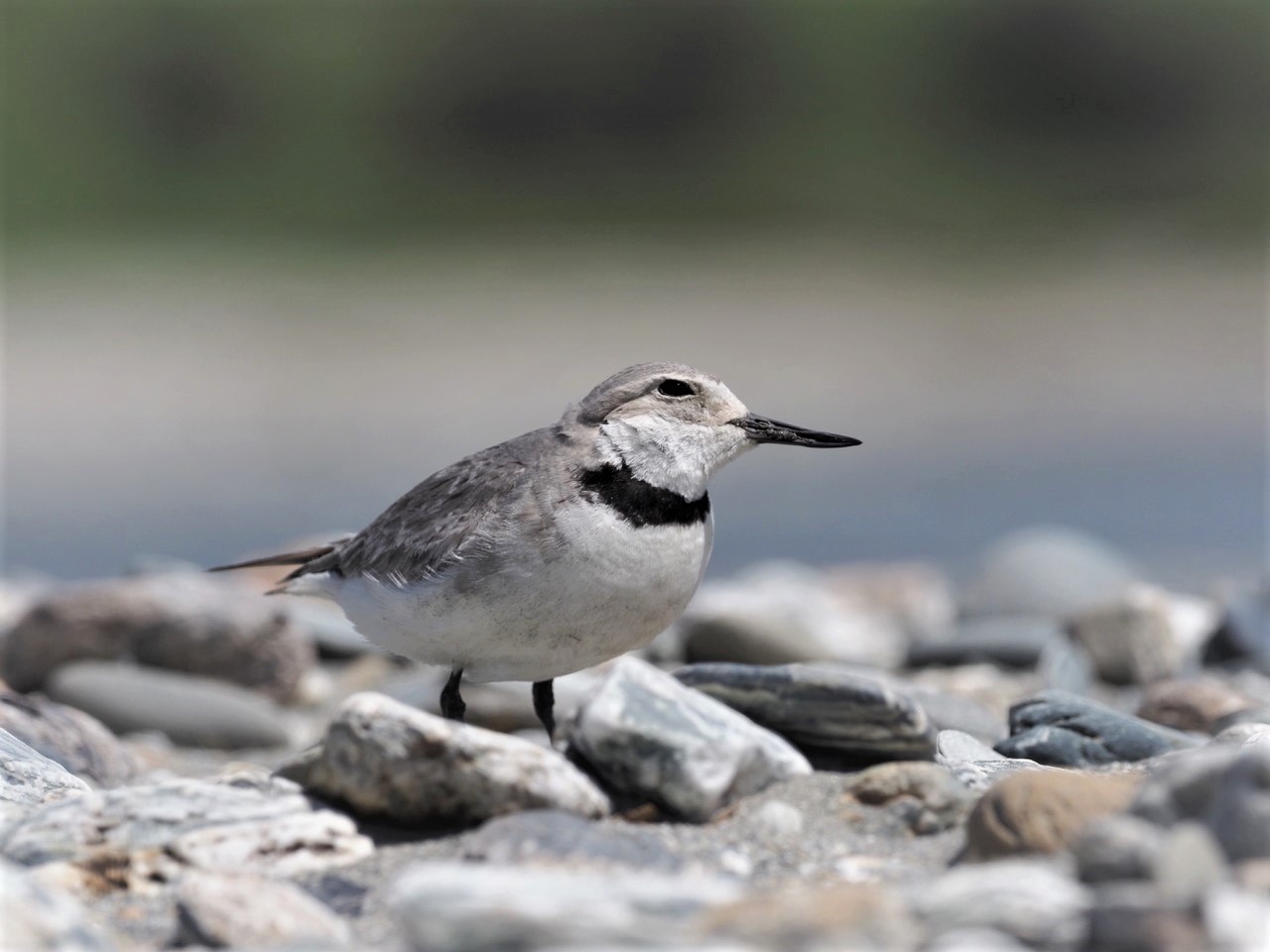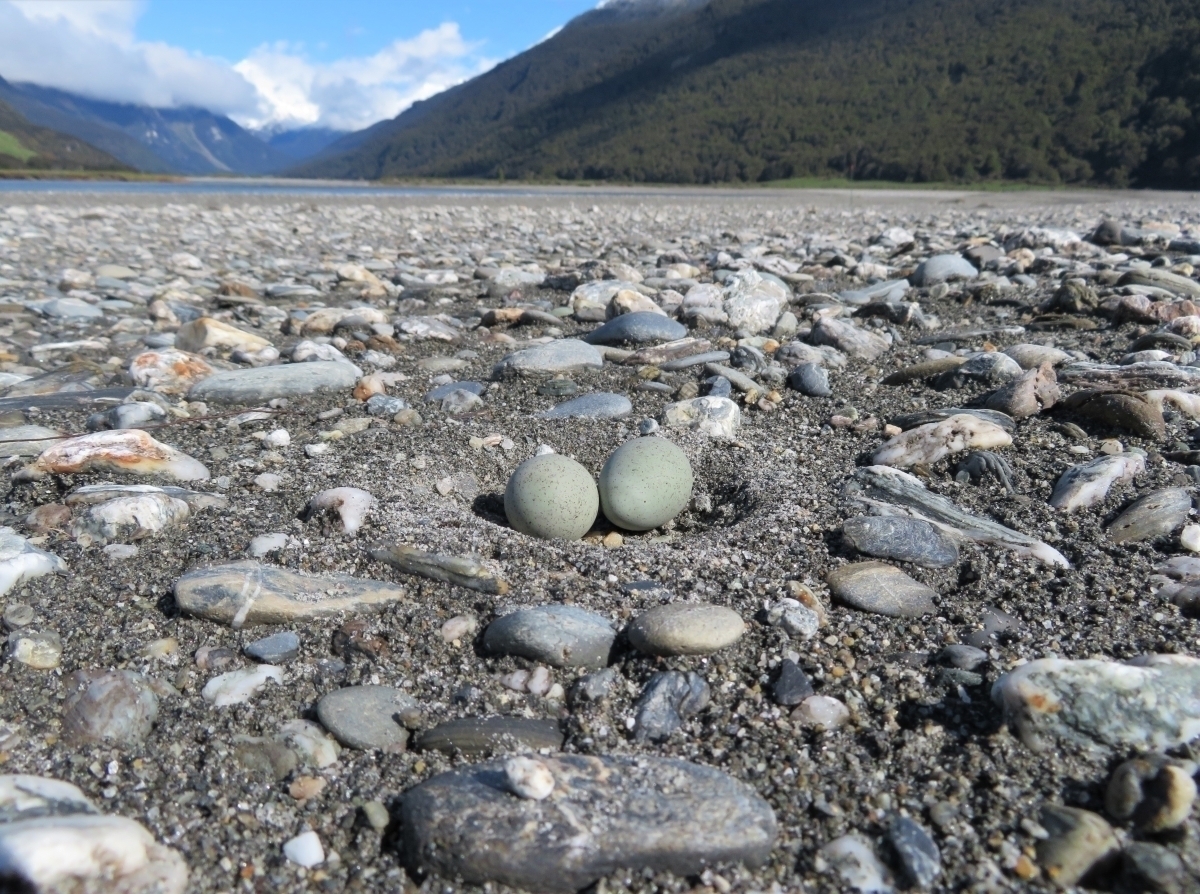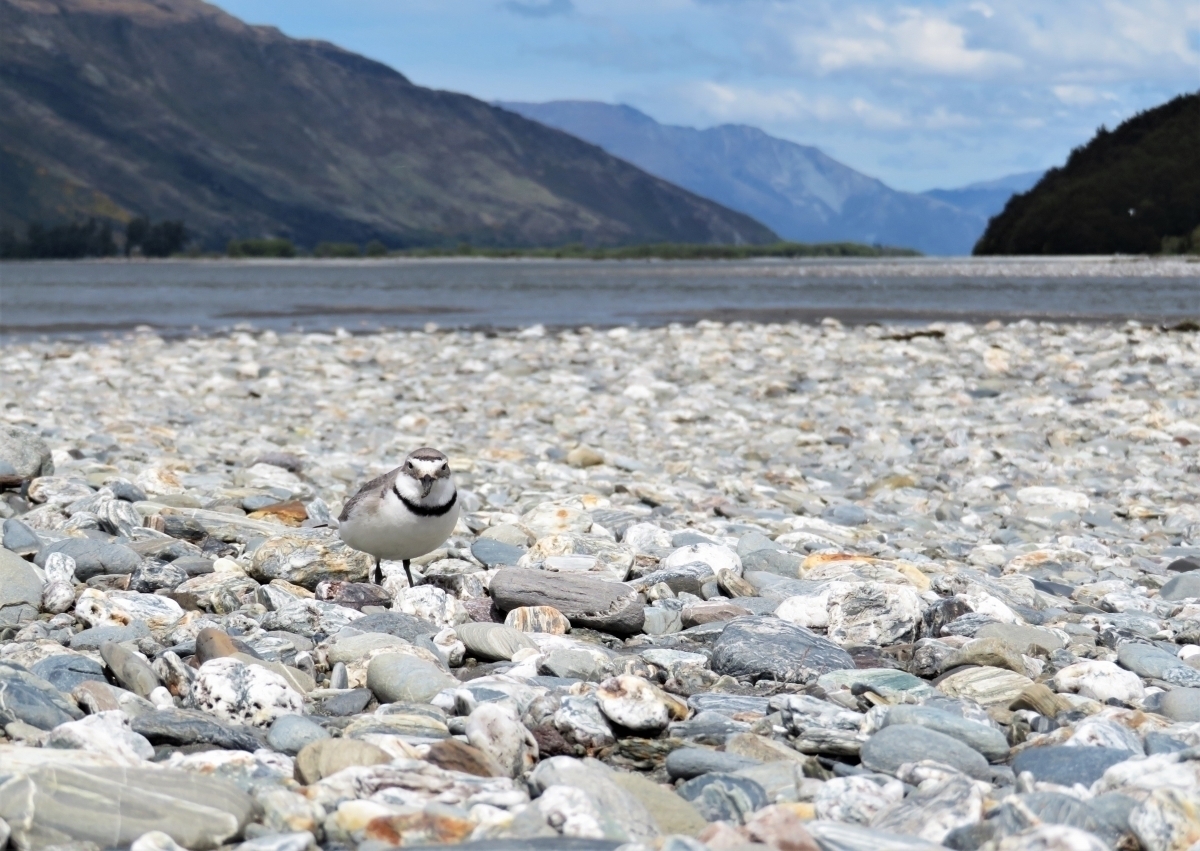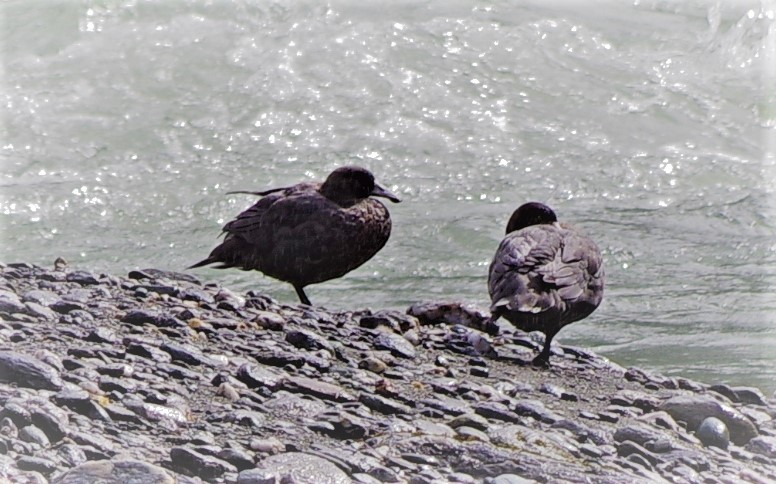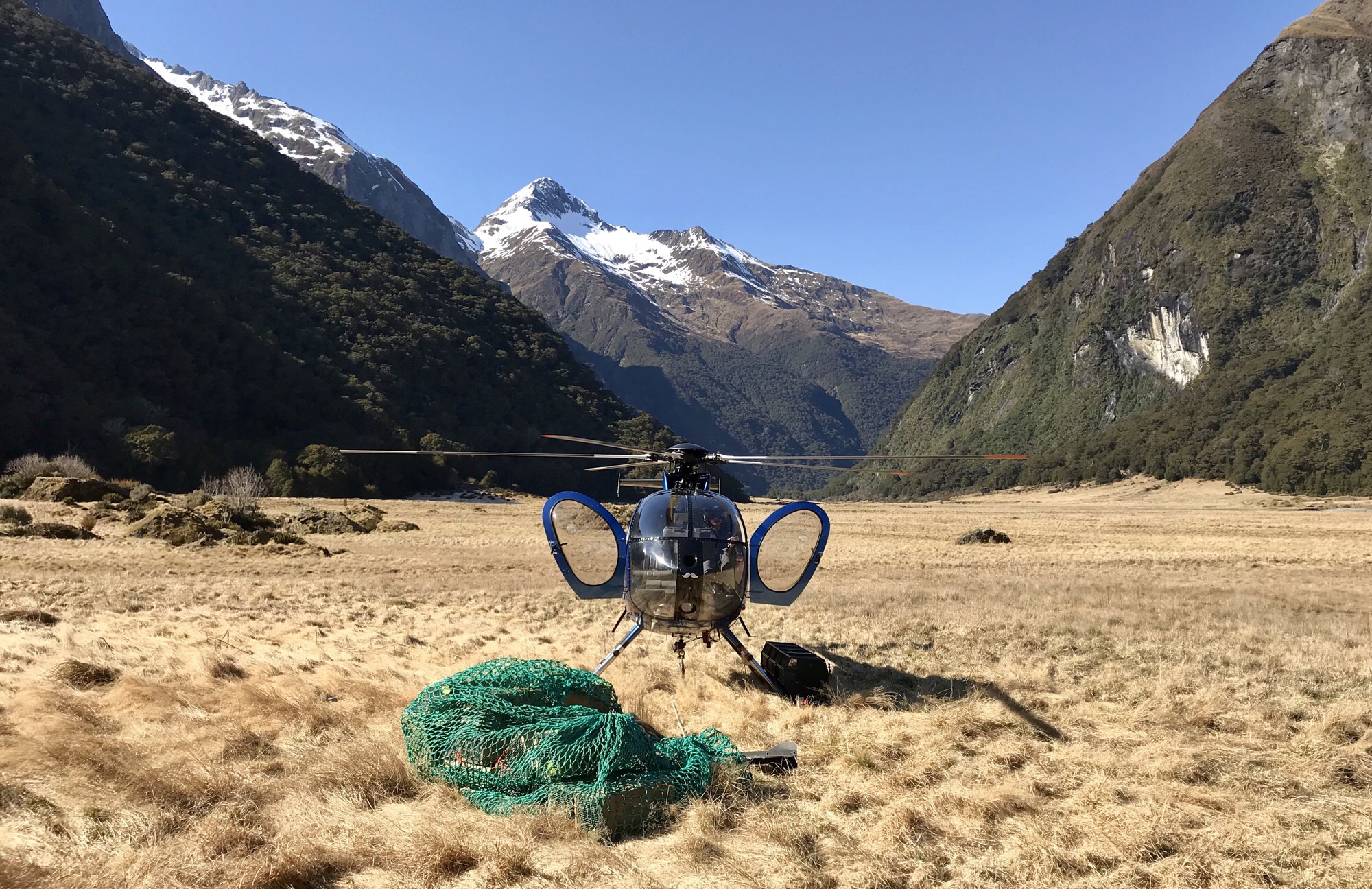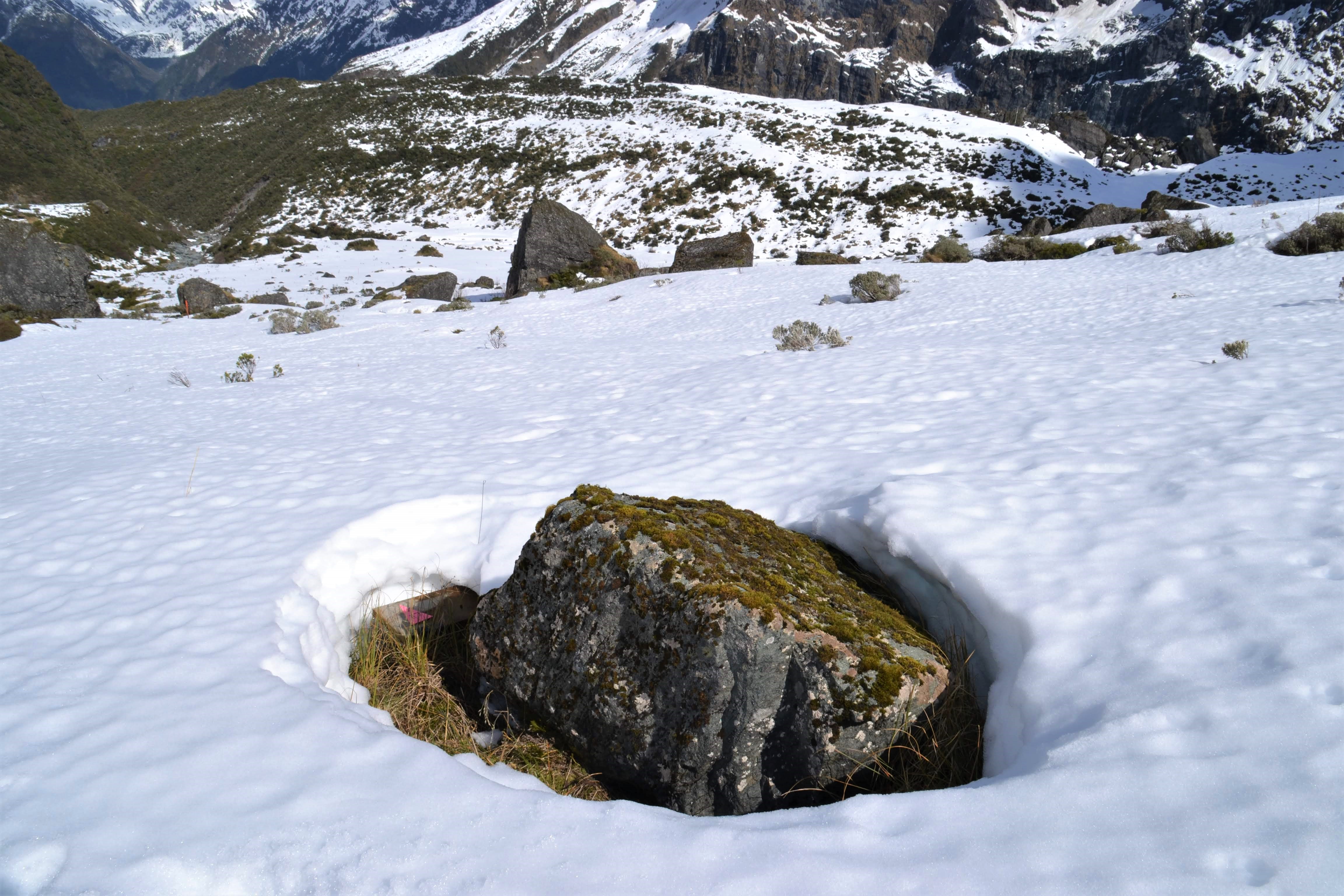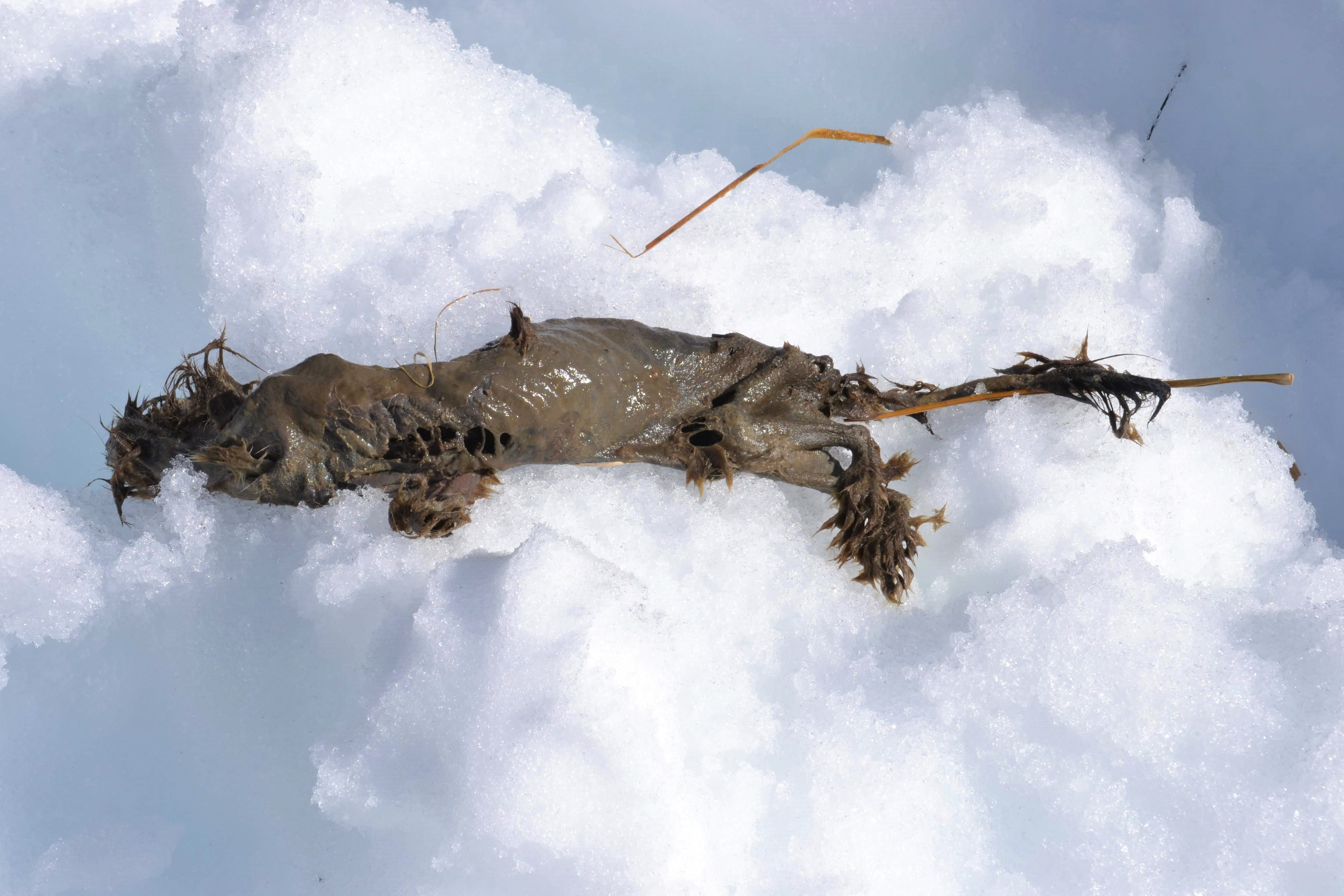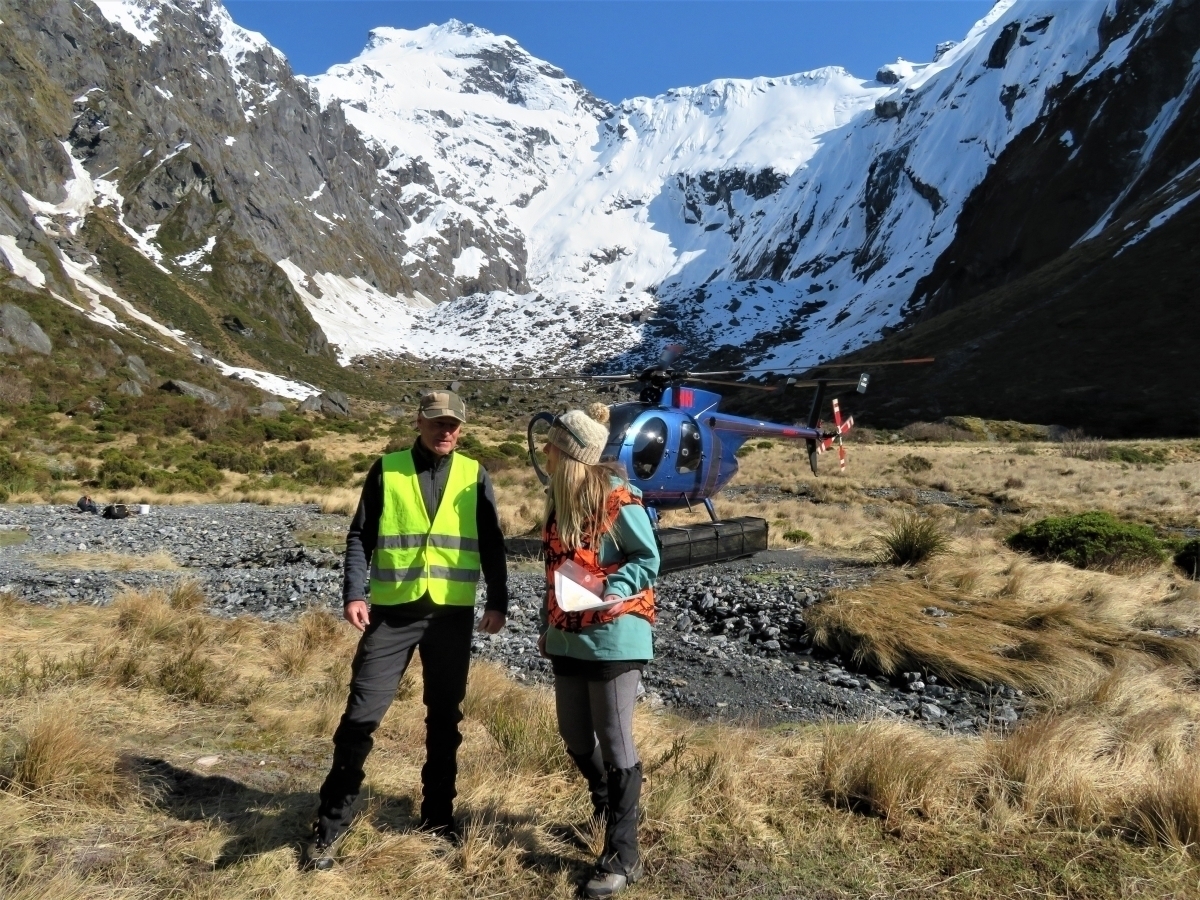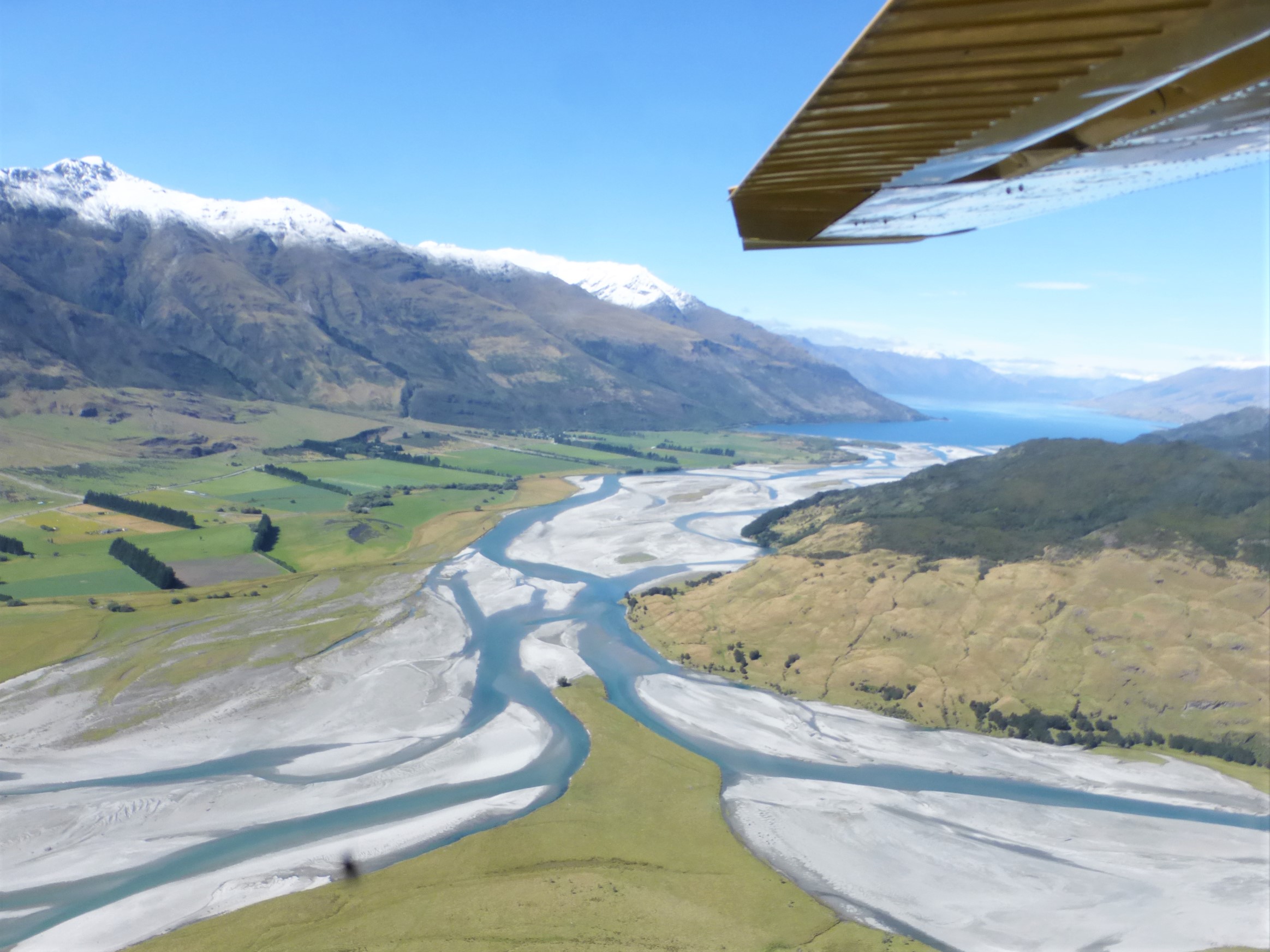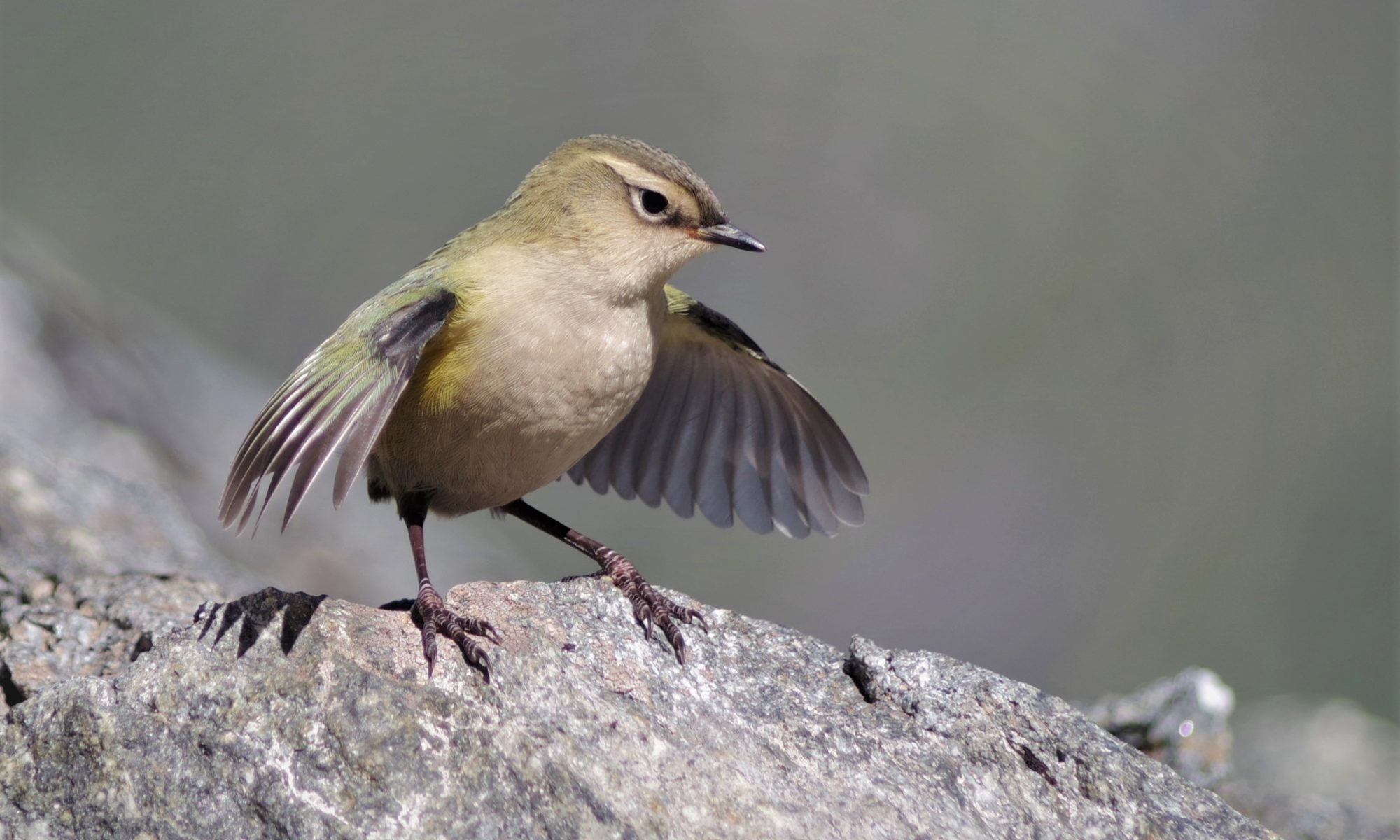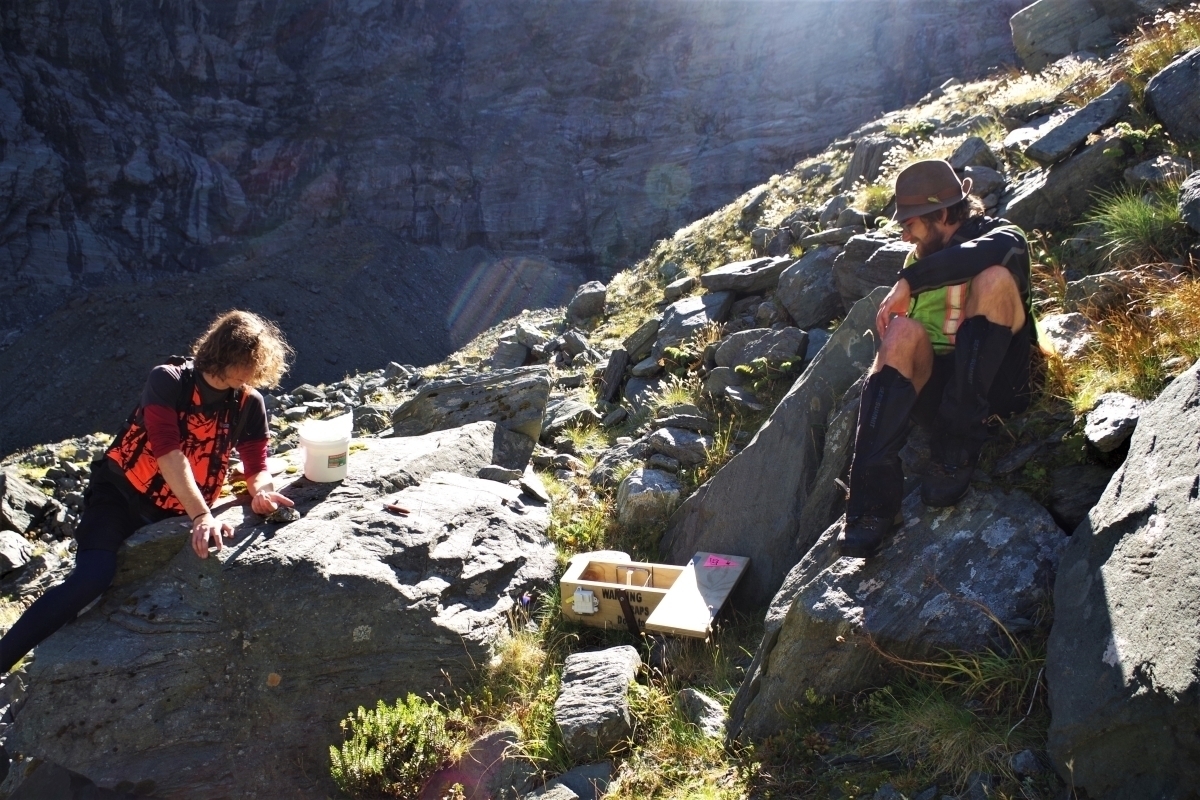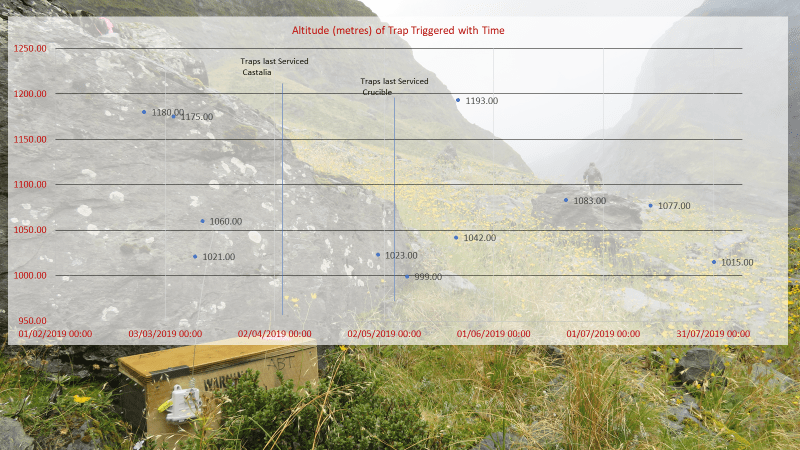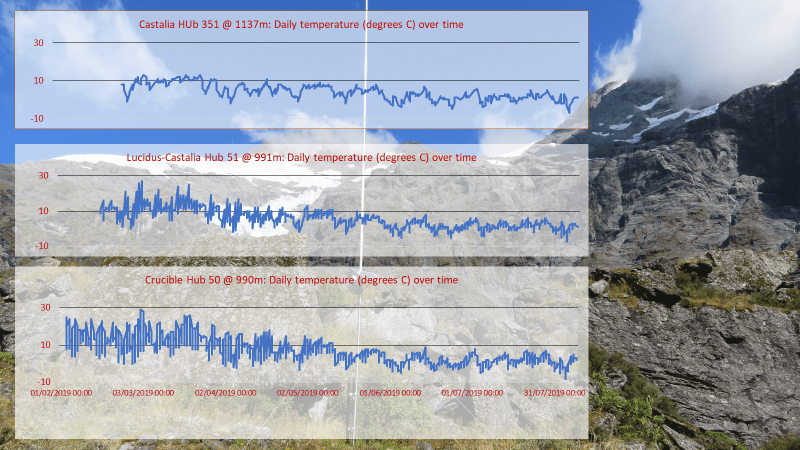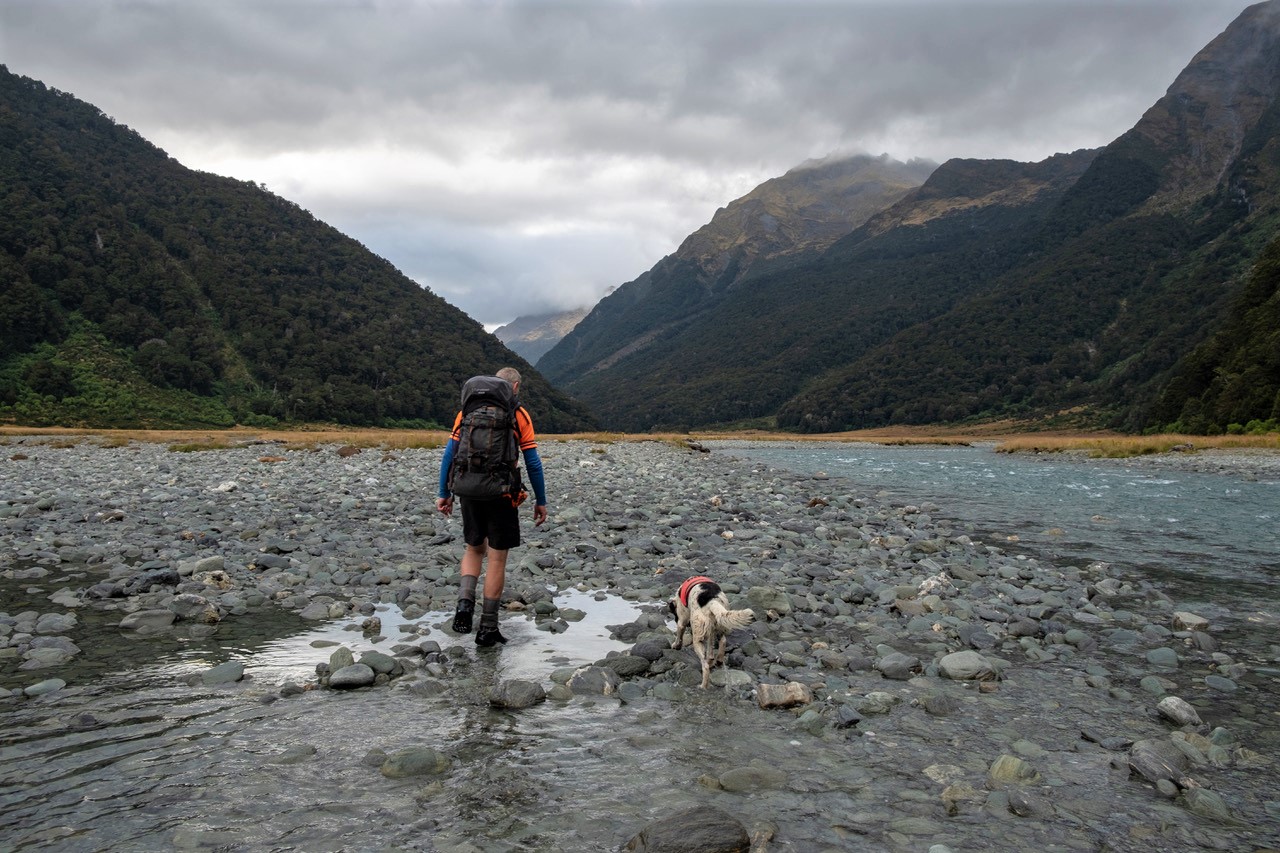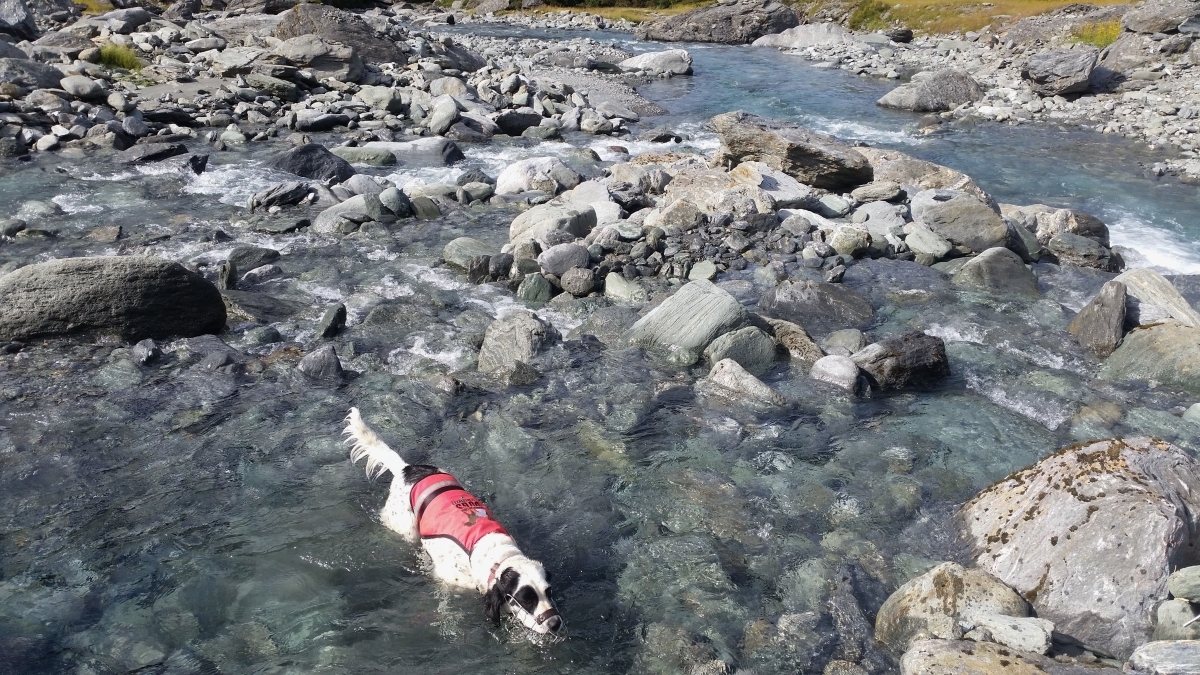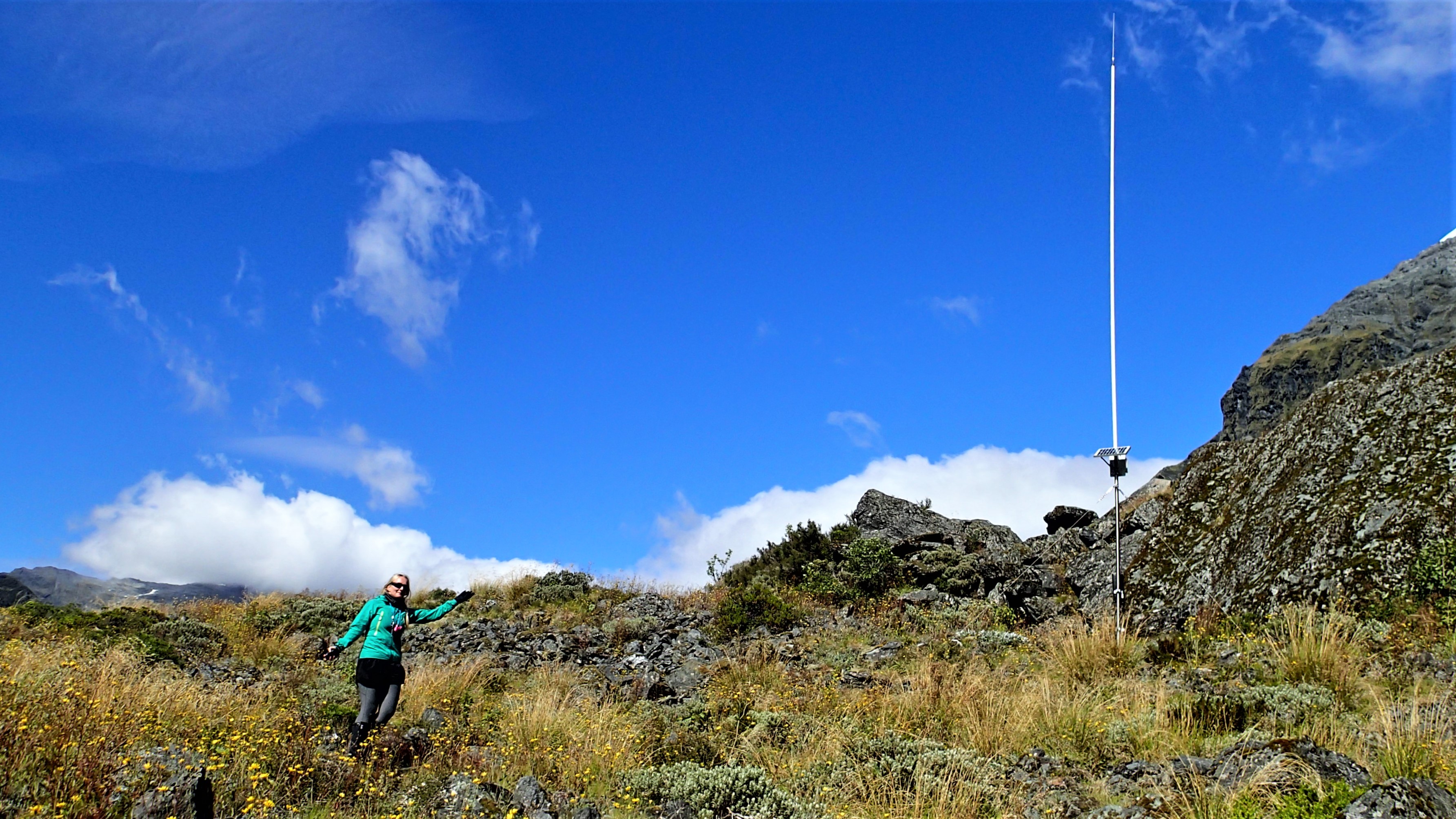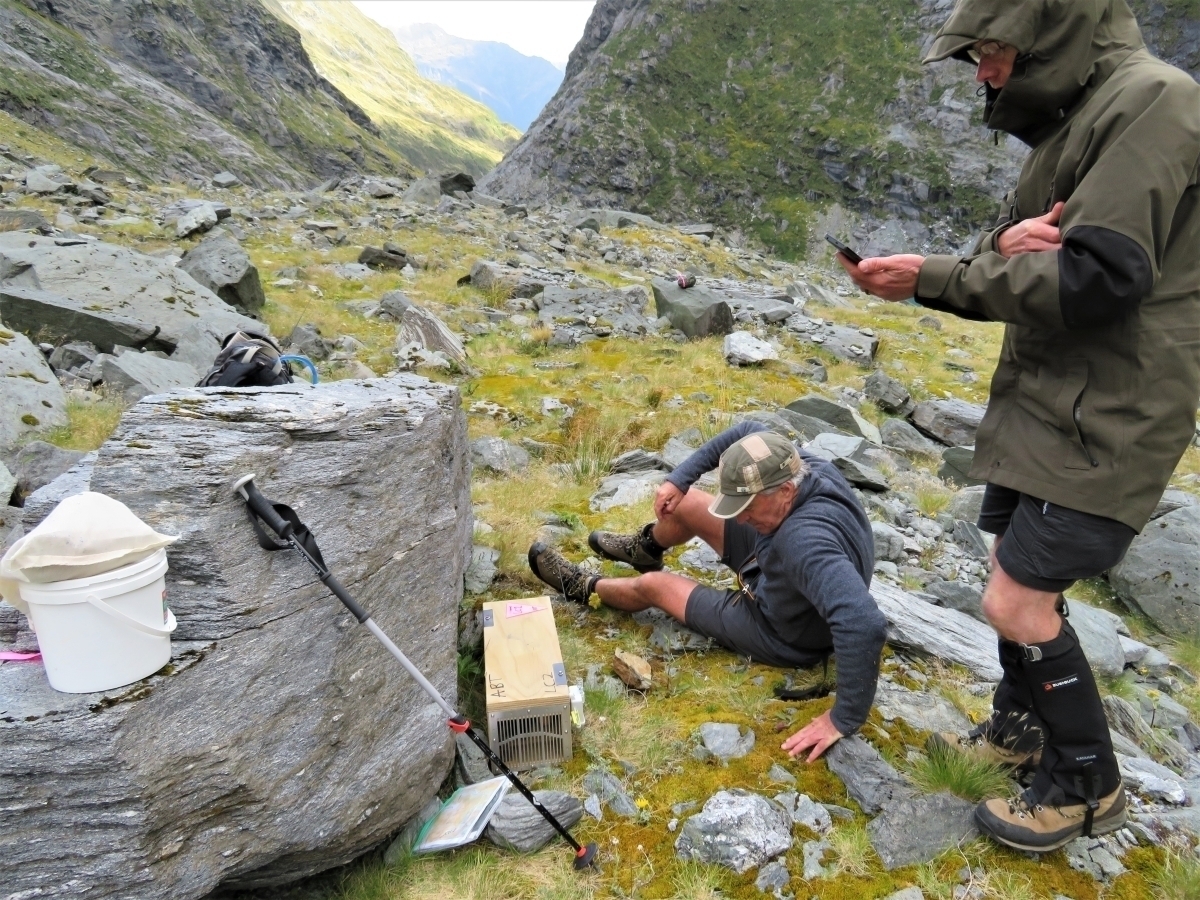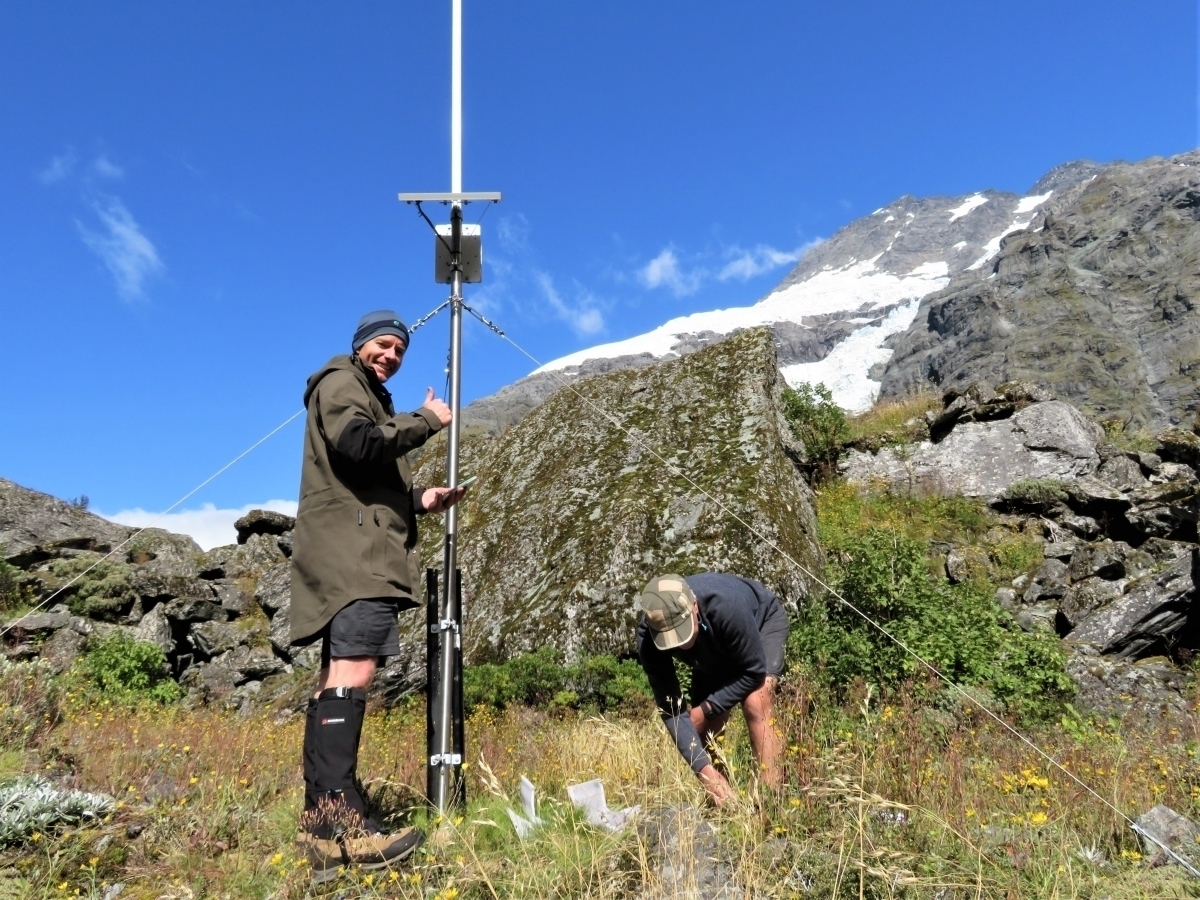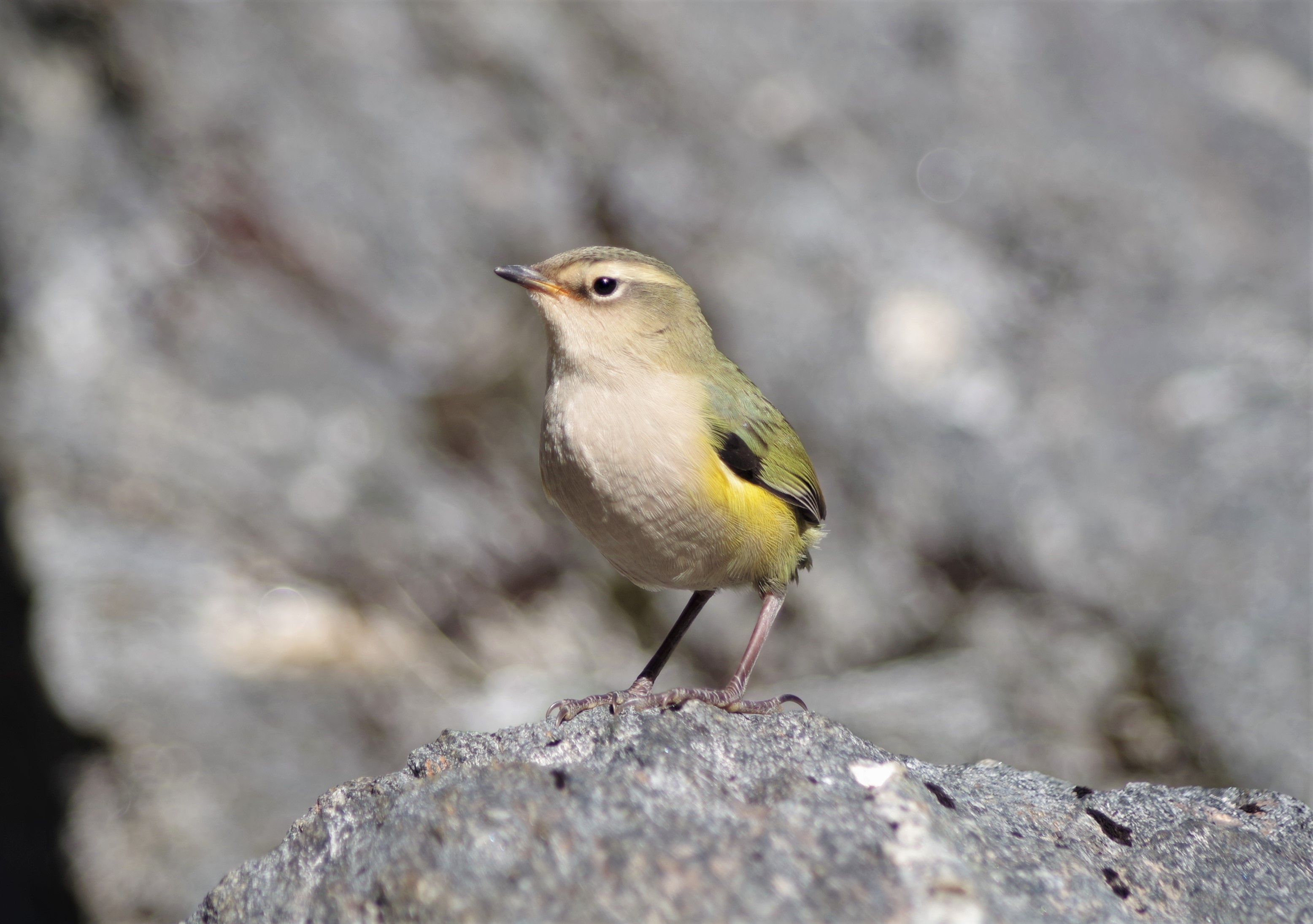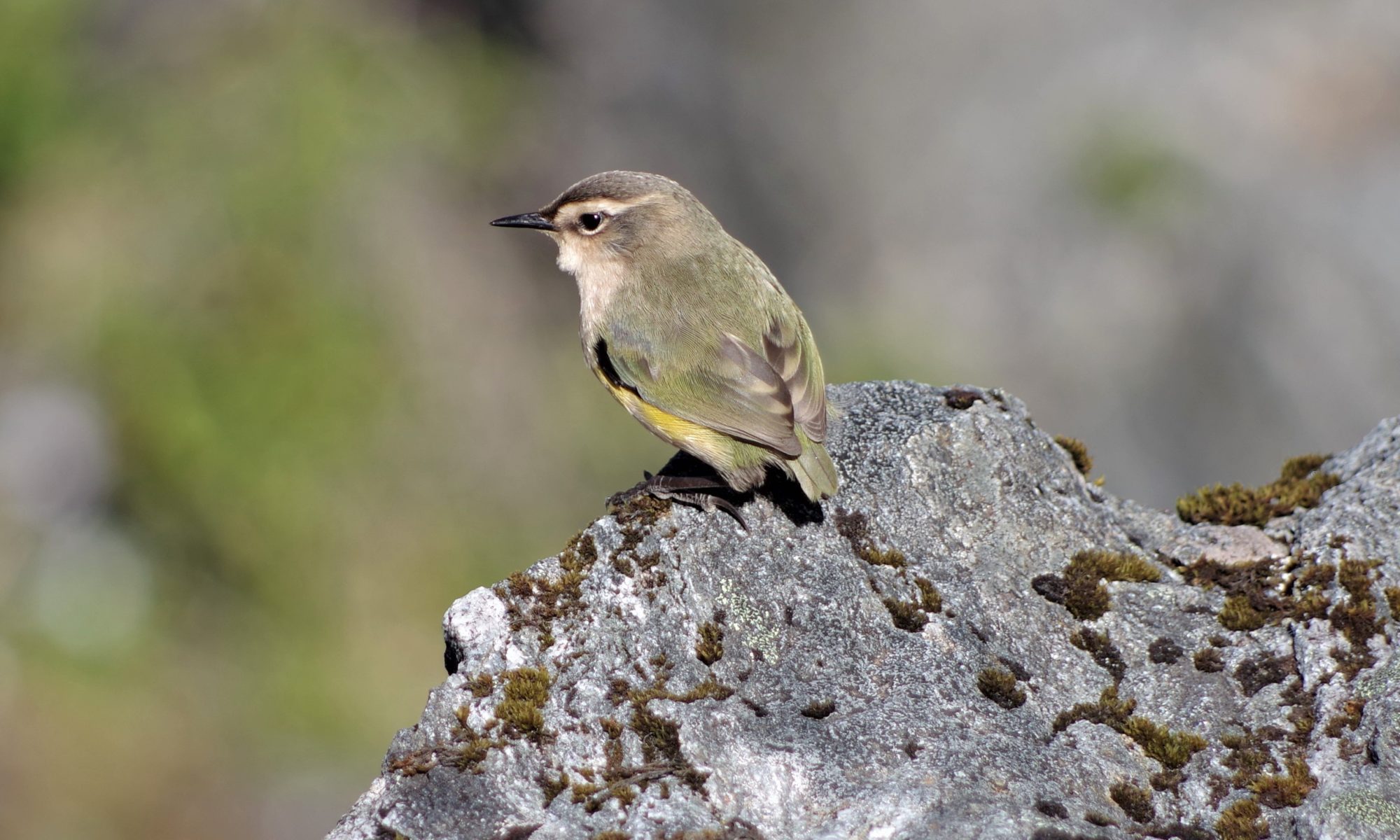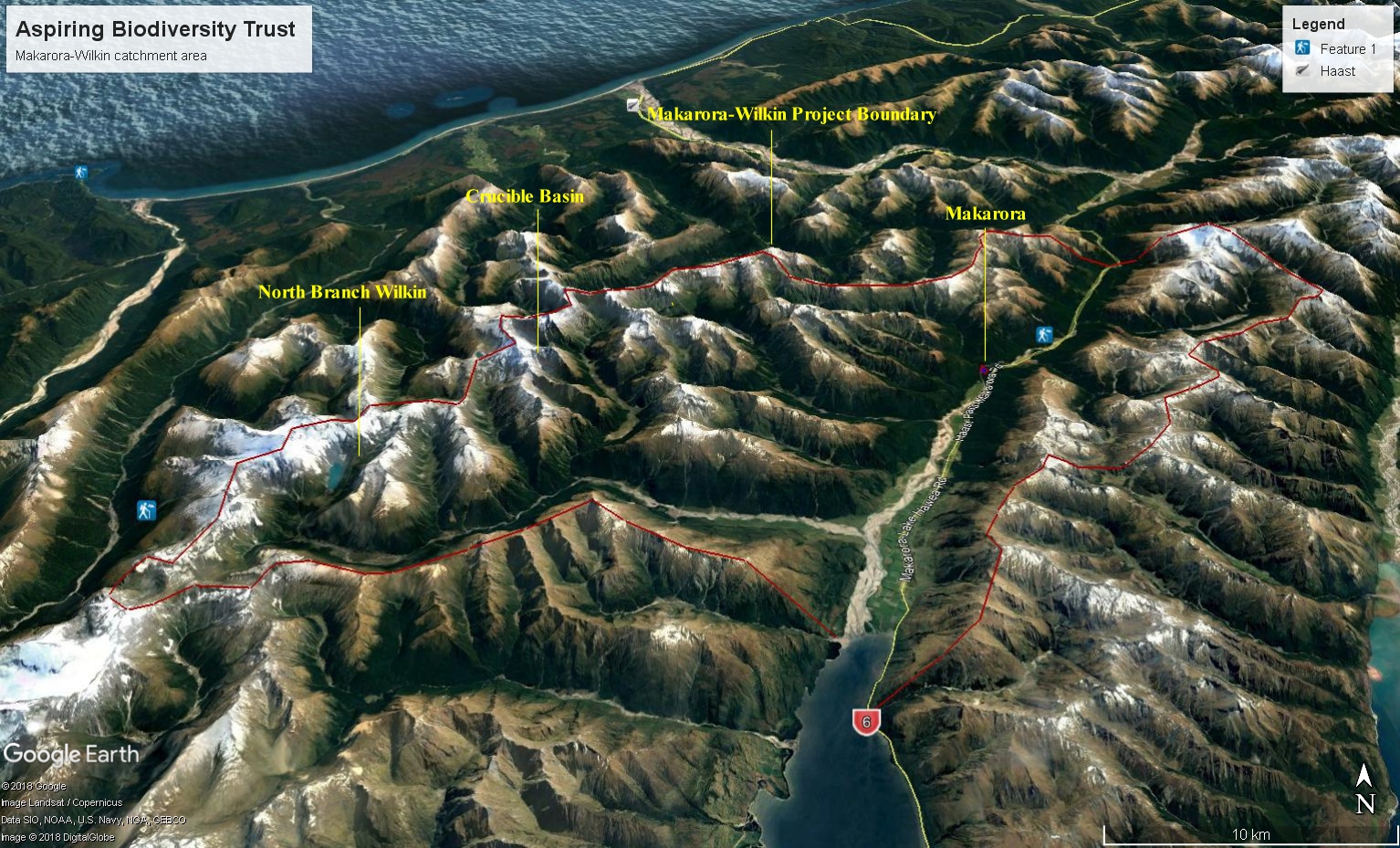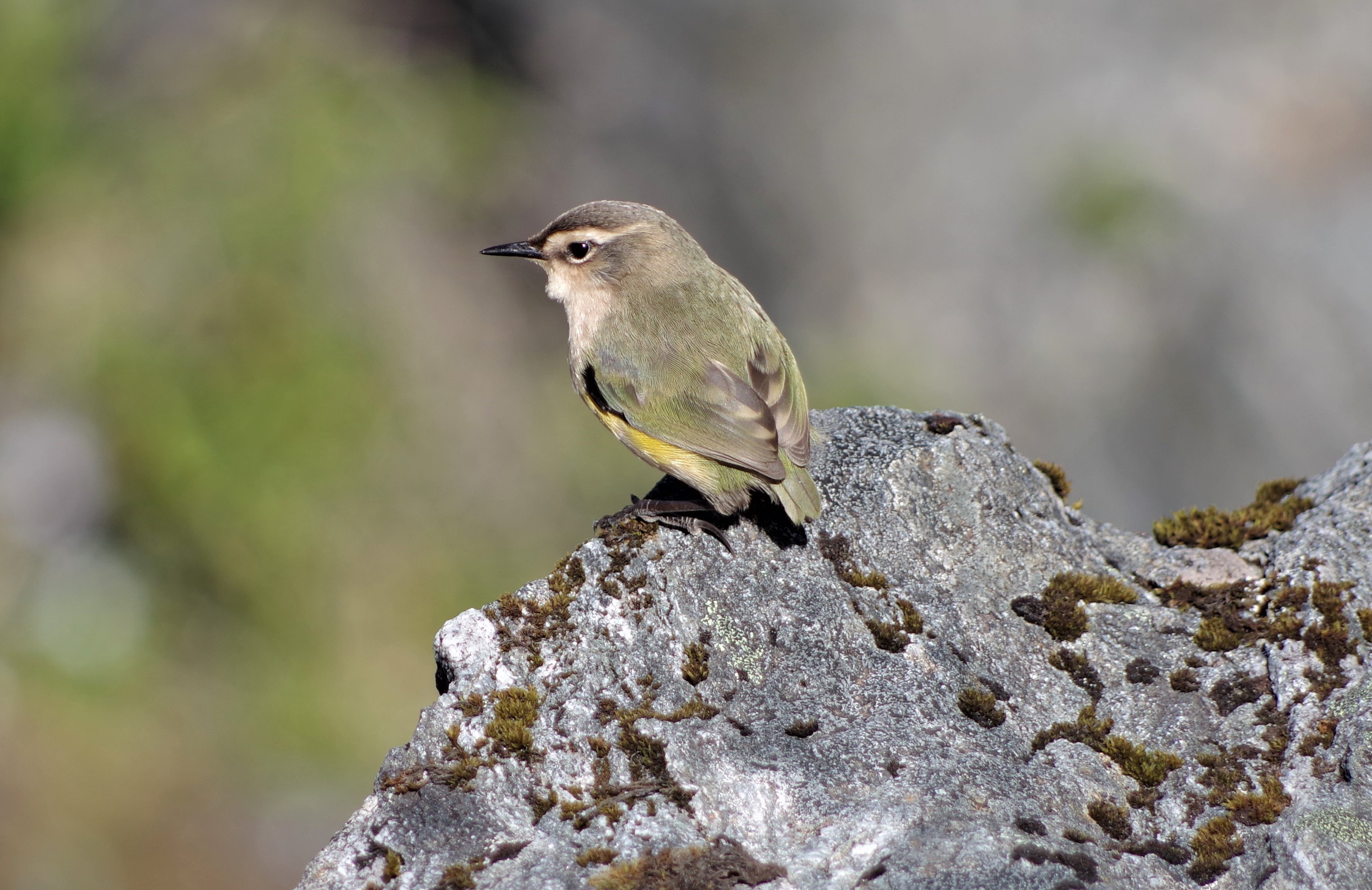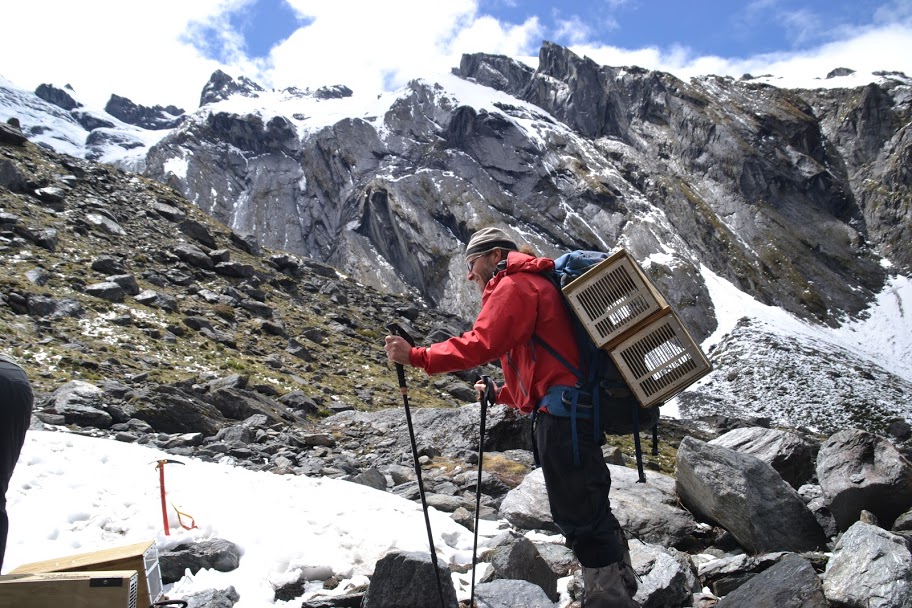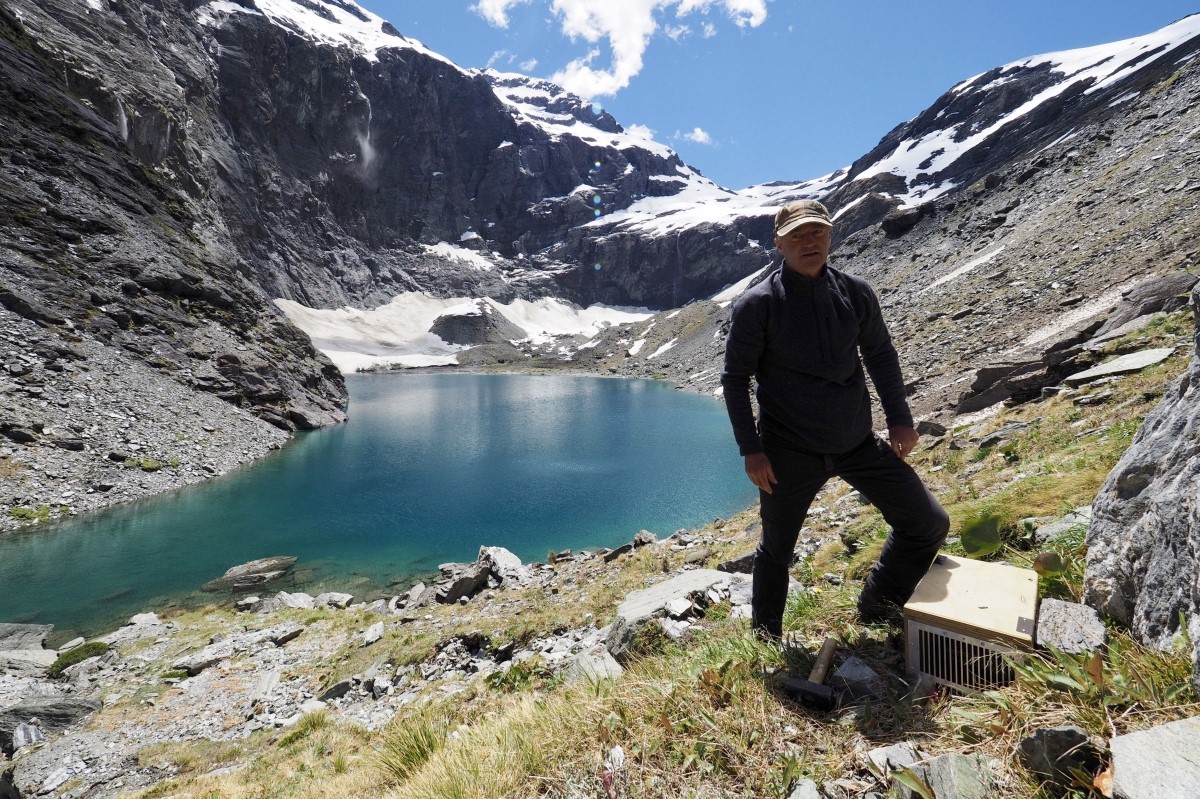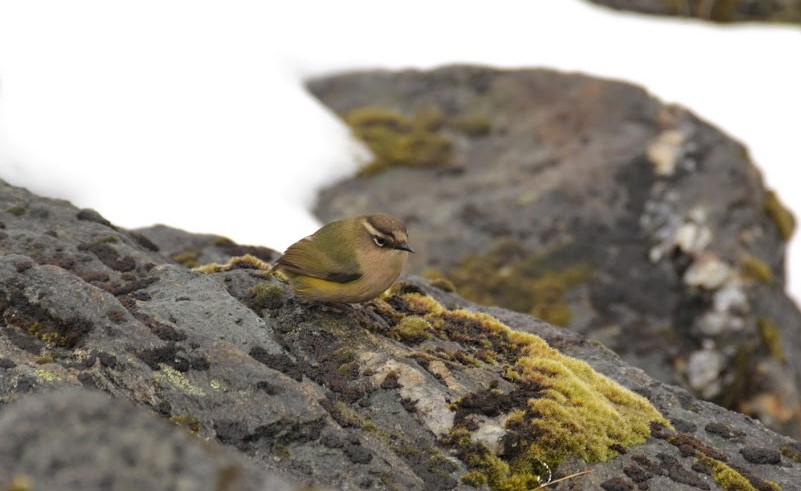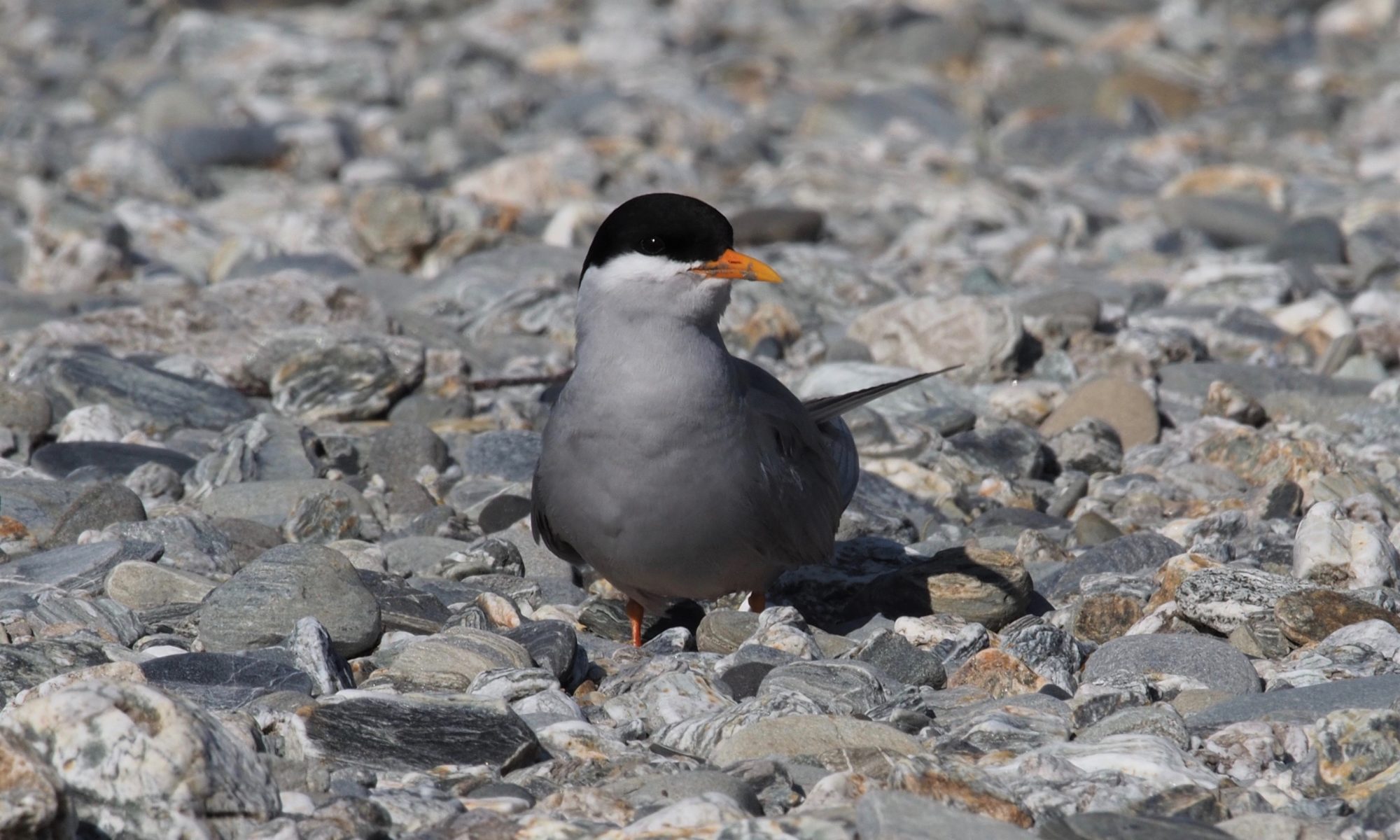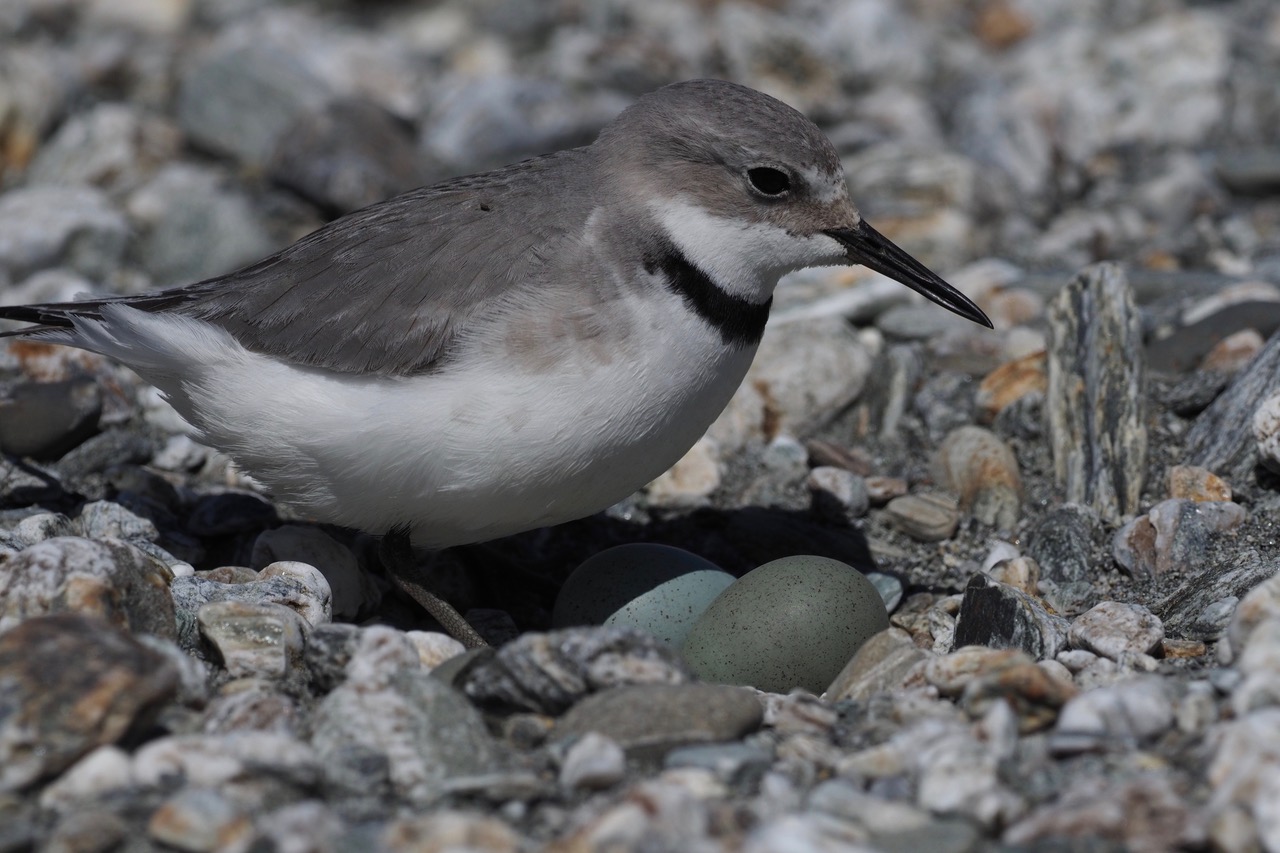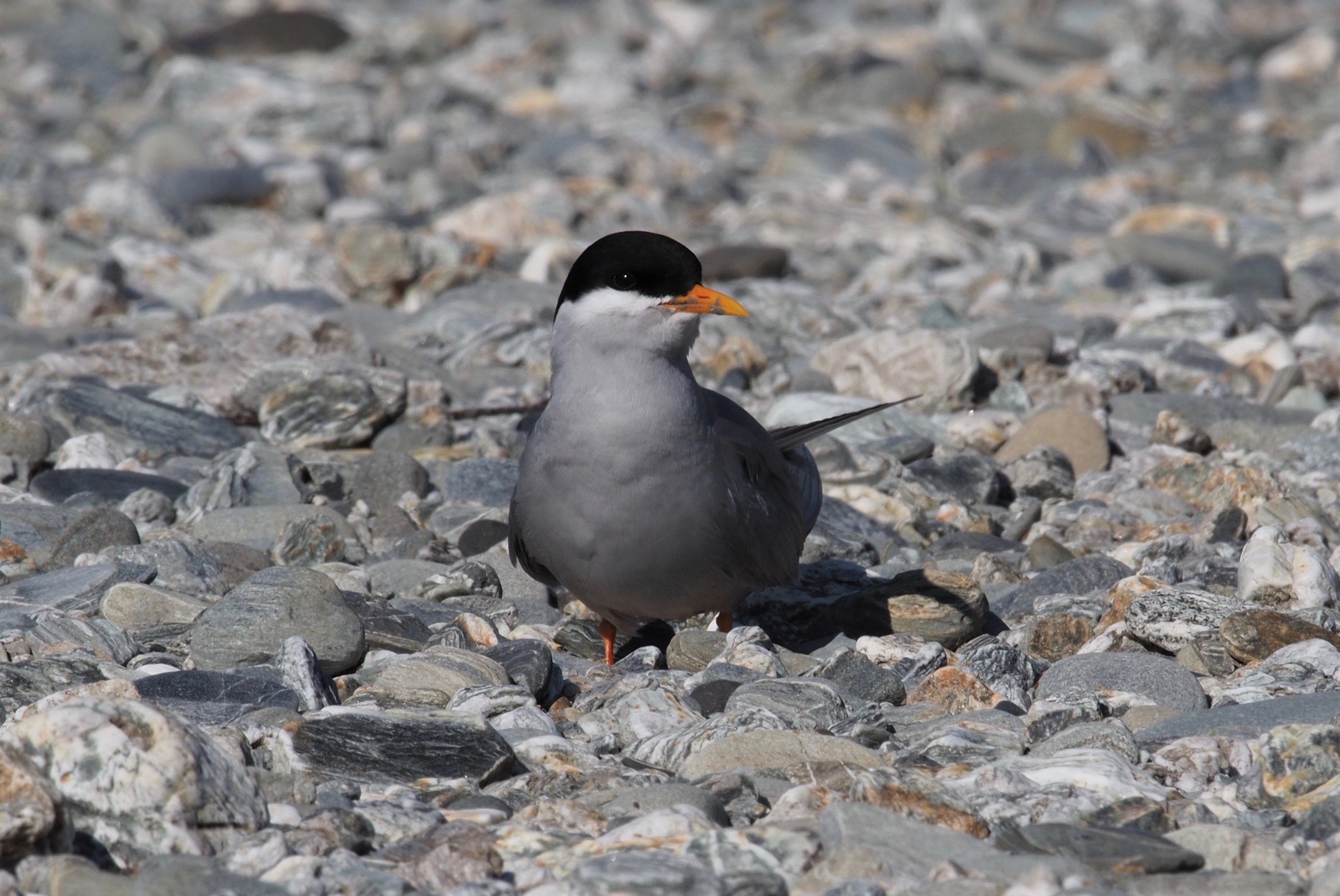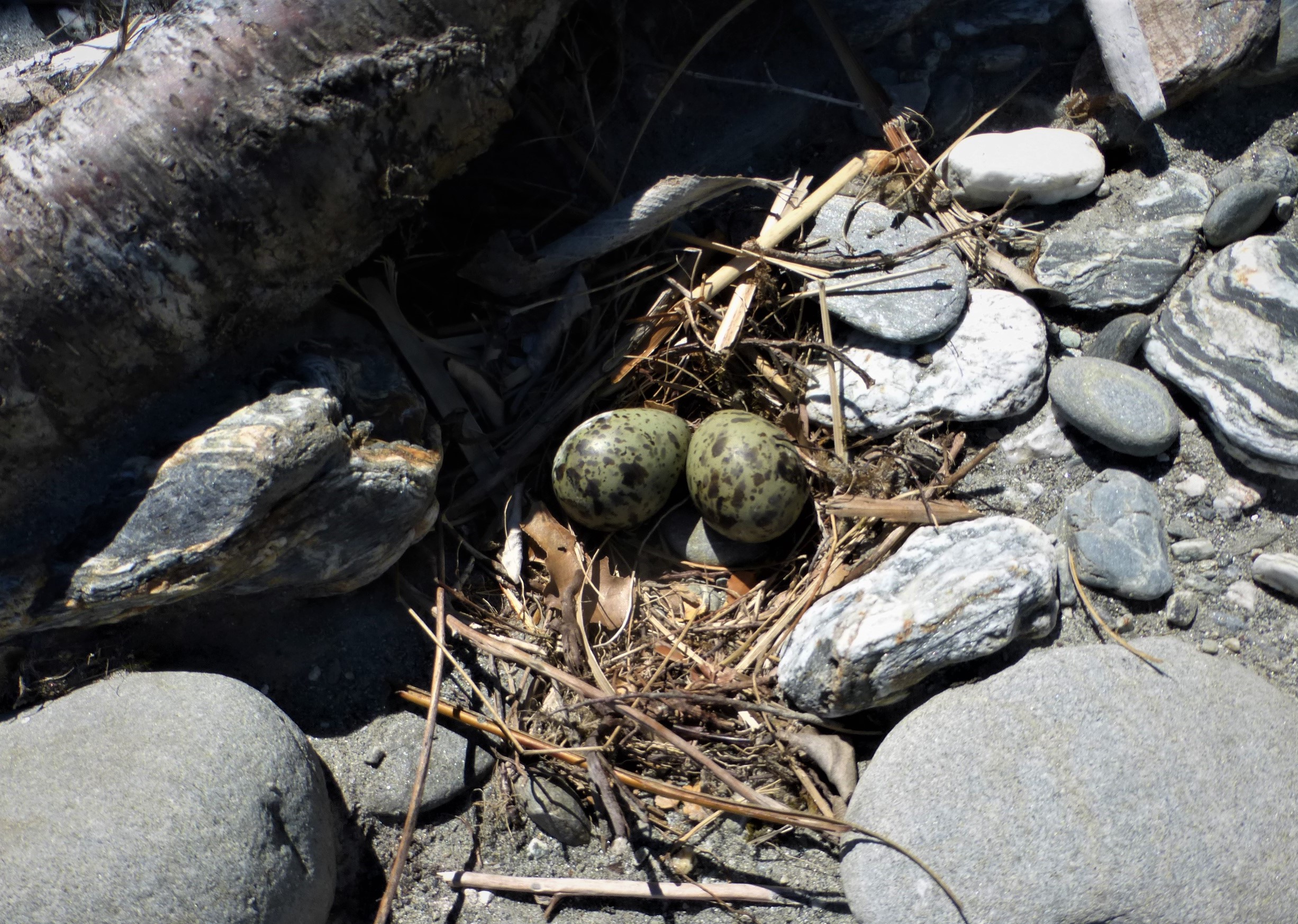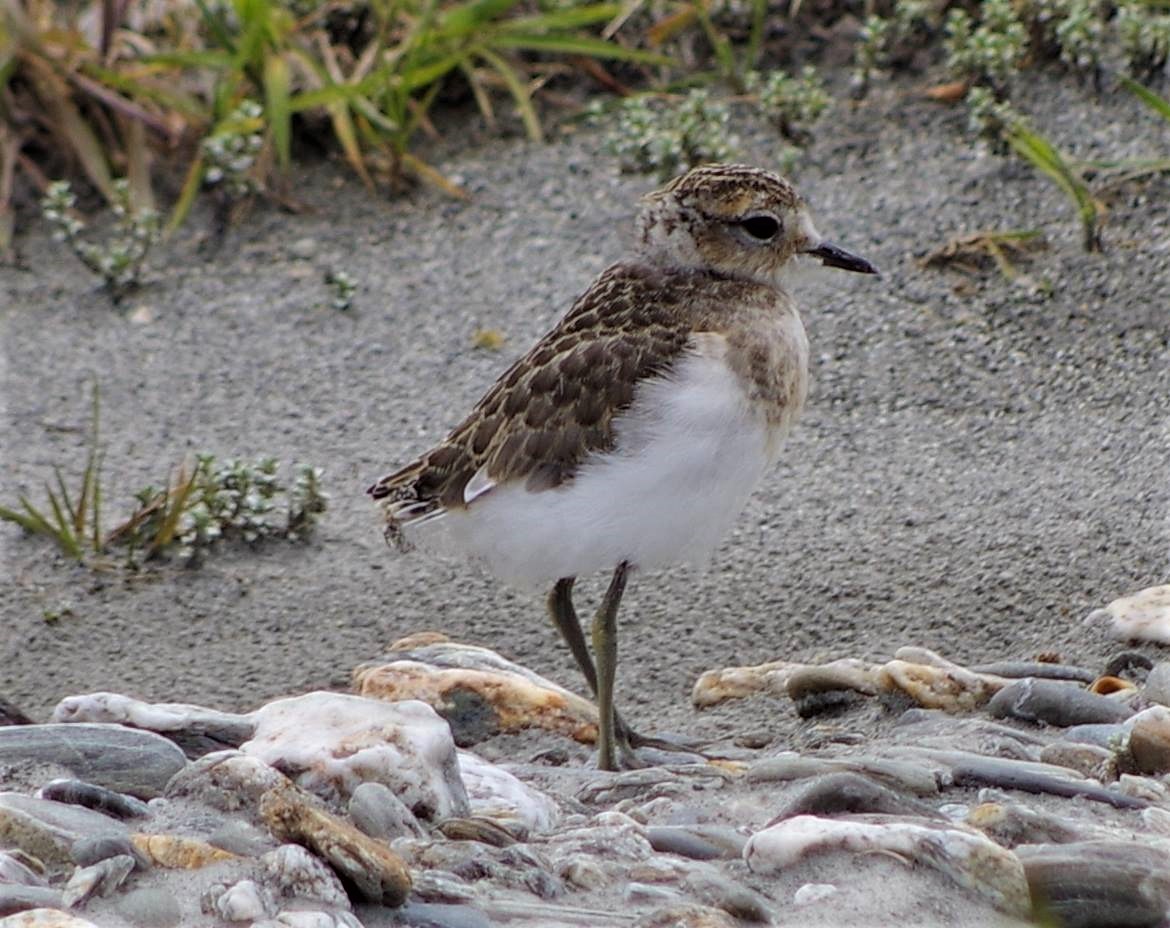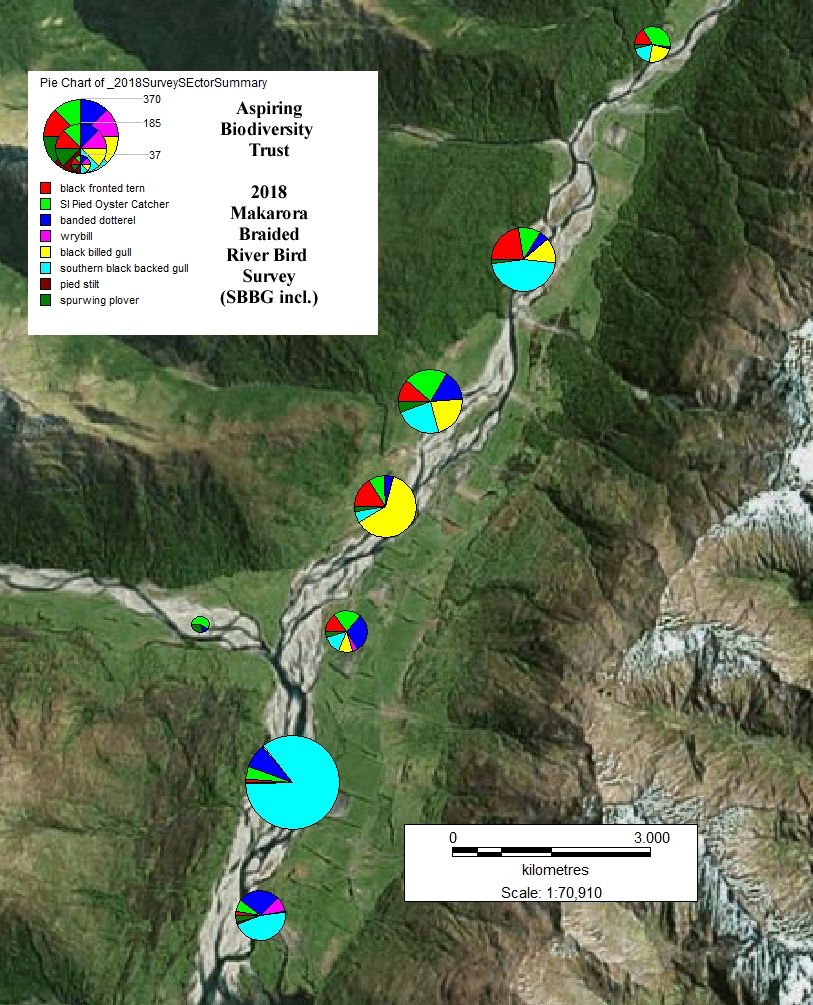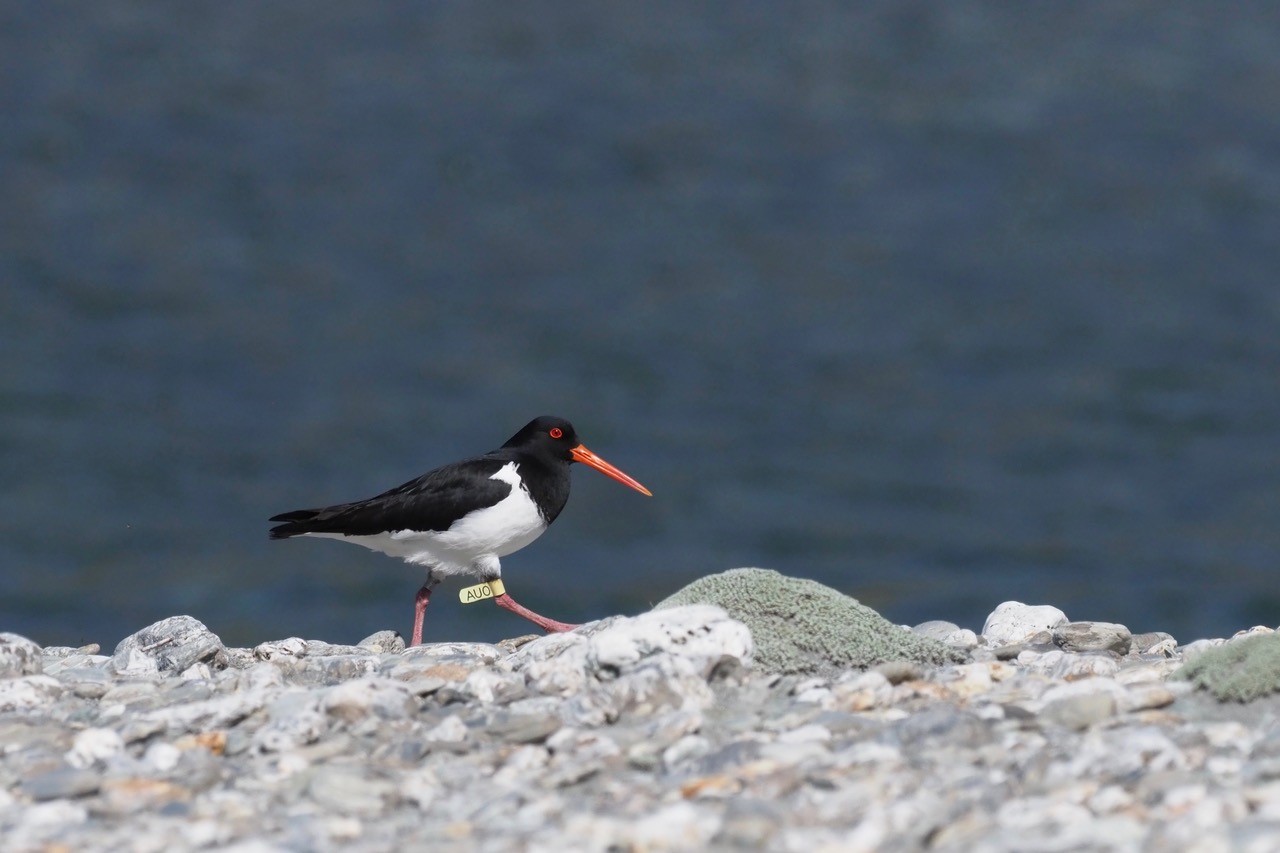This season has seen the return of the South Island kaka (Nestor meridionalis) in the Makarora valley as recorded in the early days by local residents and as documented partly by the work of the late Peter Child (1980’s).
ABT’s baseline forest bird survey was undertaken on four occassions for the Shrimpton/ Charteris beech/ podocarp forest during 2018/2019. Results recorded a total of 24 species; 14 endemic, 2 native and 8 introduced. A pair of kaka was recorded utilising the forest habitat in spring and summer during the survey. Kaka are seasonal specialists, moving from food source to food source as different fruits, seeds and nectar become available.
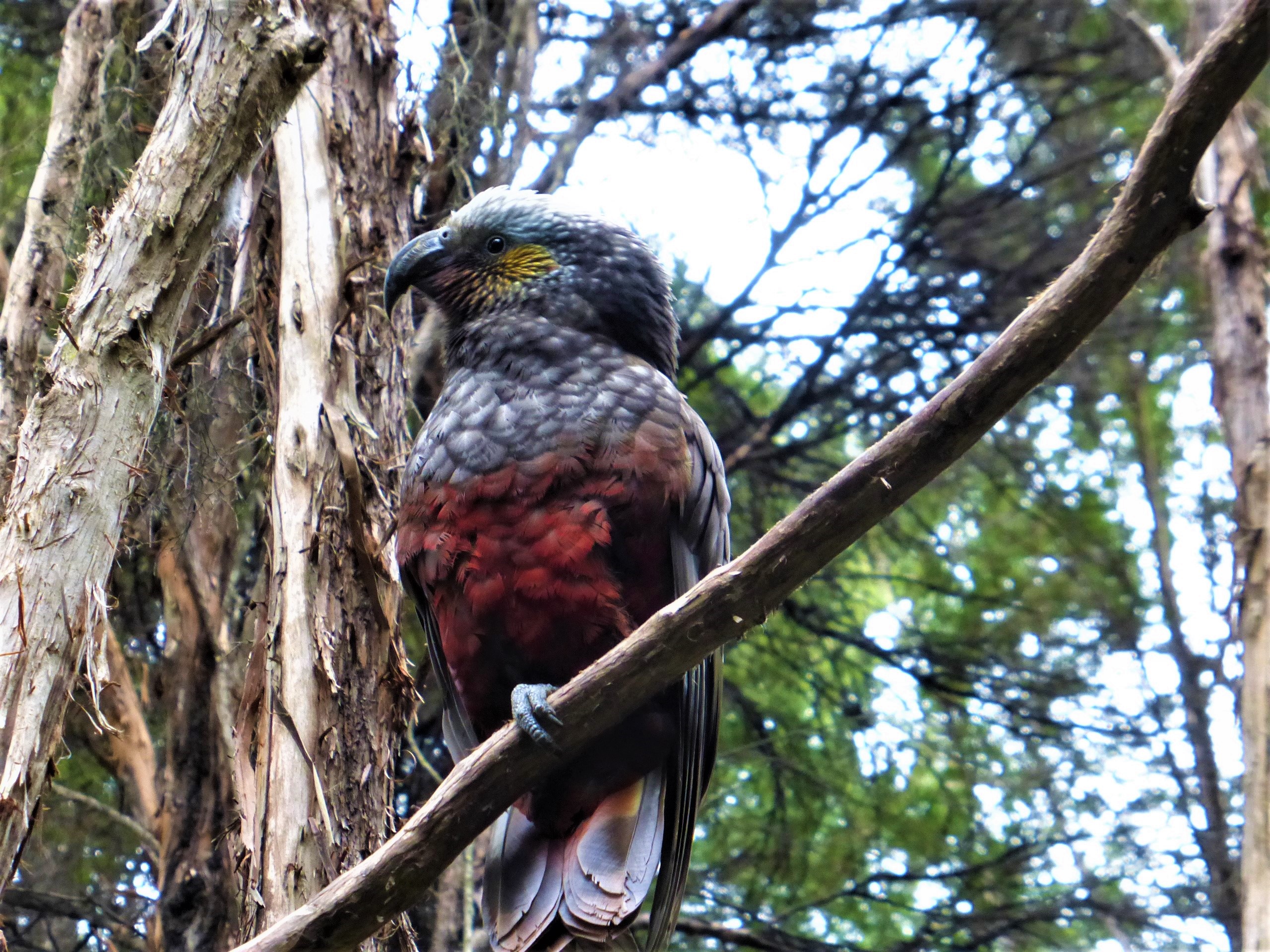
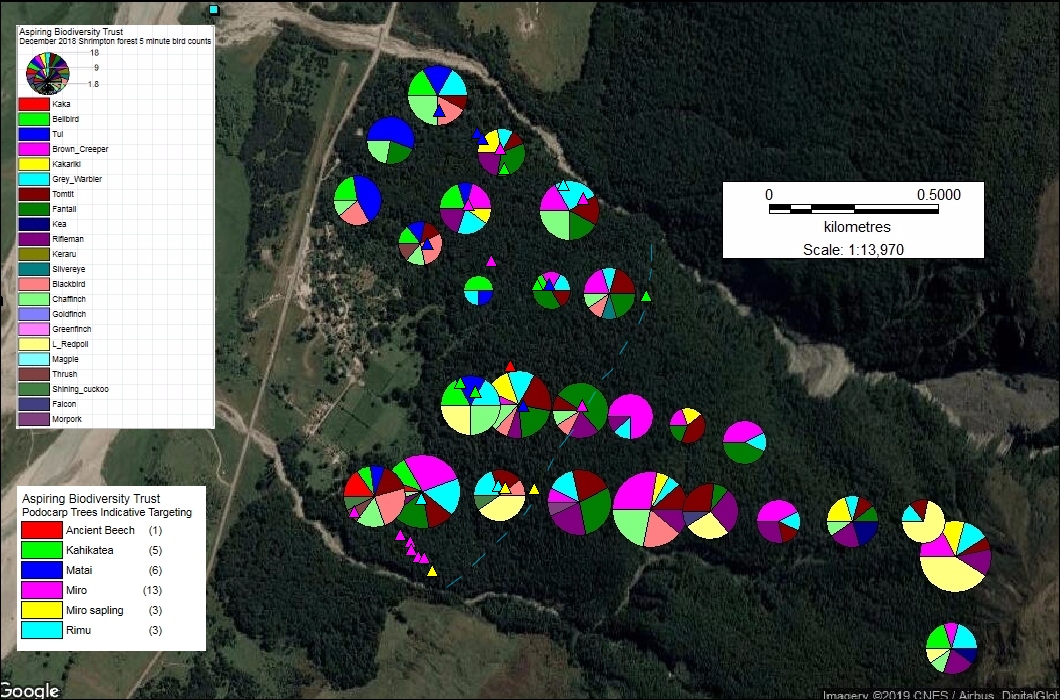
Regular sitings of a flock of up to 13 kaka were first reported during this spring by local residents and have been seen and heard reguarly since, by many people including myself during several stays in the valley. Historically the highest total in any one valley within the region has been documented as 14 (Child’s 1981).
Their jurassic like raucous sqawks and melodic social calls can be heard most evenings and mornings and are often seen flying between areas of forest, residential gardens, the motor camp and commuting over the highway to further foraging habitat.
Long term resident Gary Charteris “It’s like how it used to be 15-20 years ago”.
Gary a keen nature enthusiast observed all 13 kaka in one of his mature trees on the 11 December and noted the characteristic white head of many, a feature of the South Island kaka. A more recent resident observed up to 10 kaka feeding on her cherry trees. They have also been noted striping away the the bark of forest deadwood whilst feeding on insect larvae. The local school below the forest have been enjoying the commuting activities of these remarkable birds.
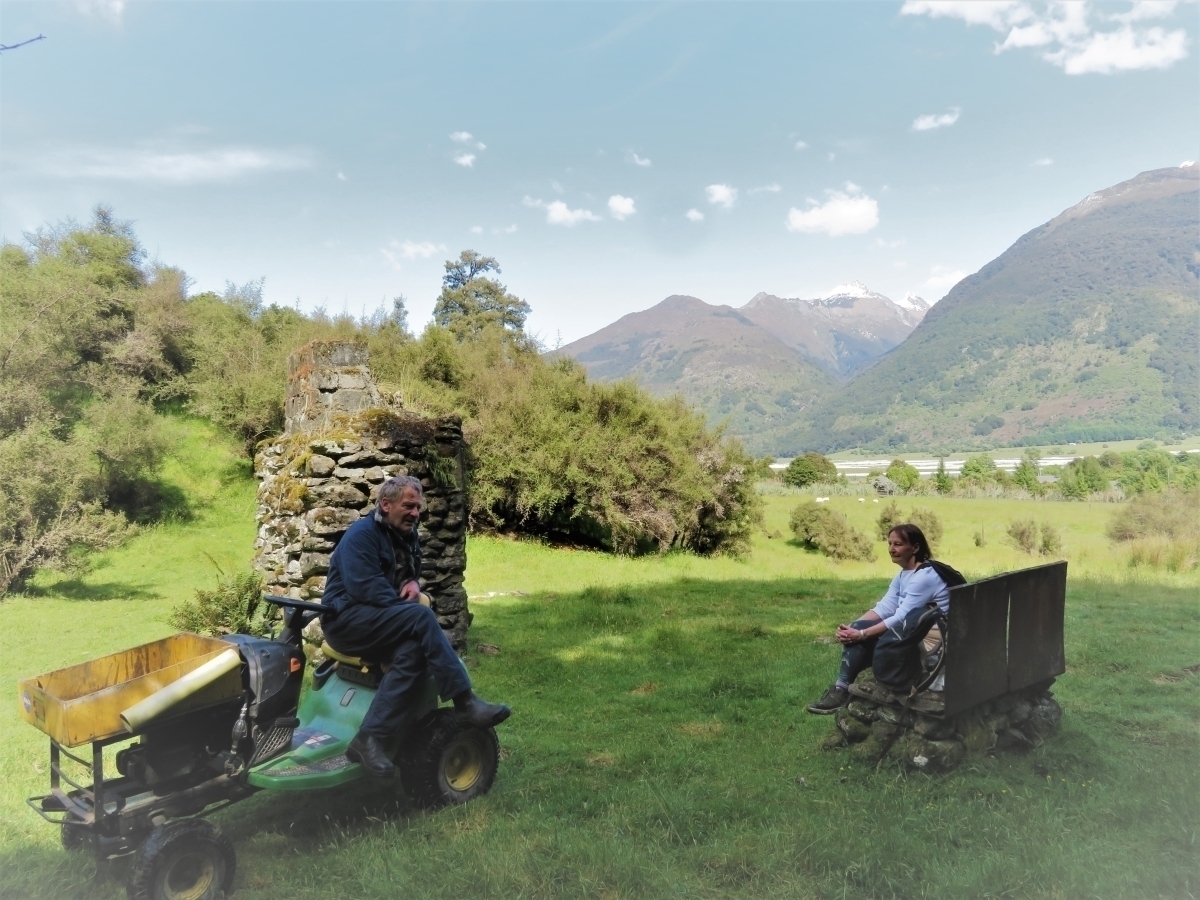
The magnificient endemic scarlet mistletoe (Peraxilla colensoi) present in the beech forest is another favourite of the kaka, who enjoy the nectar and the flowers along with small flocks of yellow-crowned karkariki (Cyanoramphus auriceps). Remanent parts can often been seen on the forest floor below where birds have been feeding.
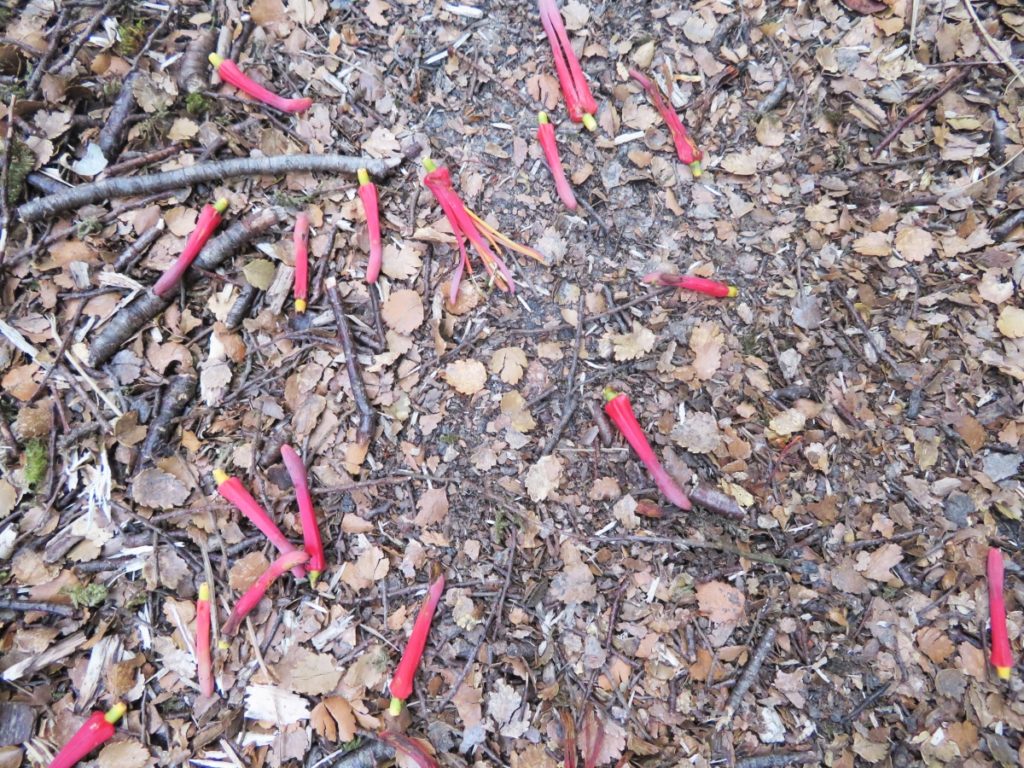
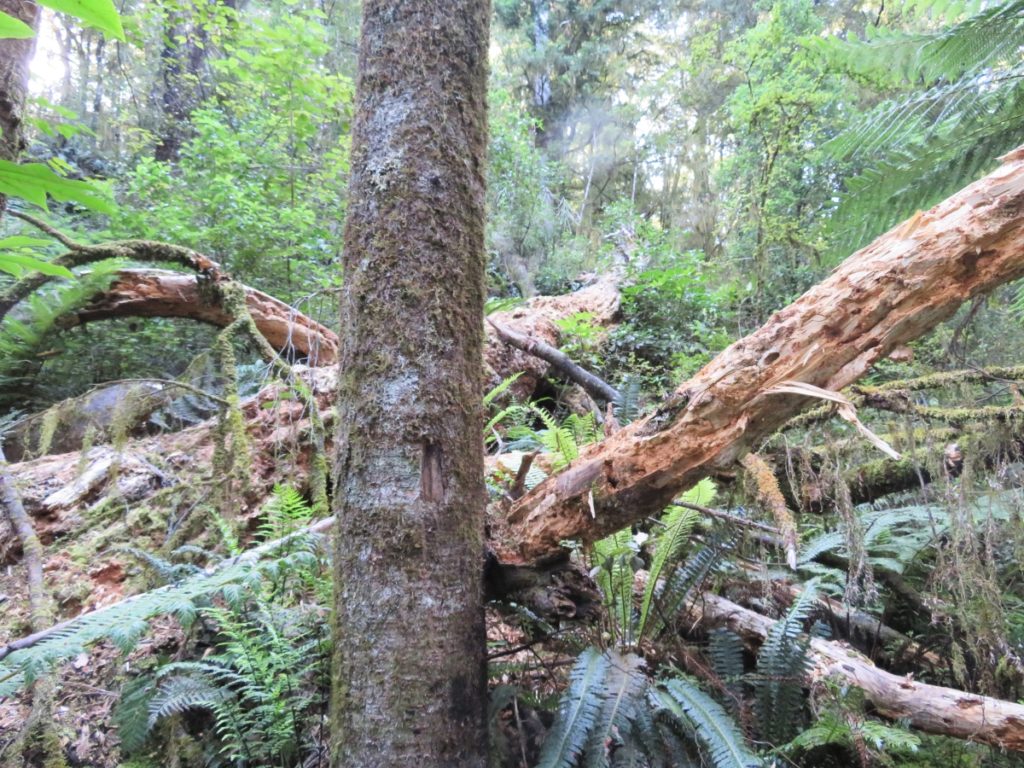
All though little is know about the kaka population in the area, it is thought that they commute from the West Coast. Numbers appear to have reduced to 3 or 4 since recent sightings so parhaps the remainder of the flock have commenced their journey back towards Haast after the summer forest food peak. More information on the range of kaka and their breeding habits within the region would be beneficial to the future conservaton of this species.
It’s now mid January and the sound of the kaka seems to have simered down. The characteristic dry-thrill call of a long-tailed cuckoo or koekoea noted flying overhead is another species recorded in January for this area of important biodiversity value. Lets hope with the help of ongoing community predator control programmes and forest bird monitoring next spring continues to see the return of the kaka and resident forest bird species continue to flourish!
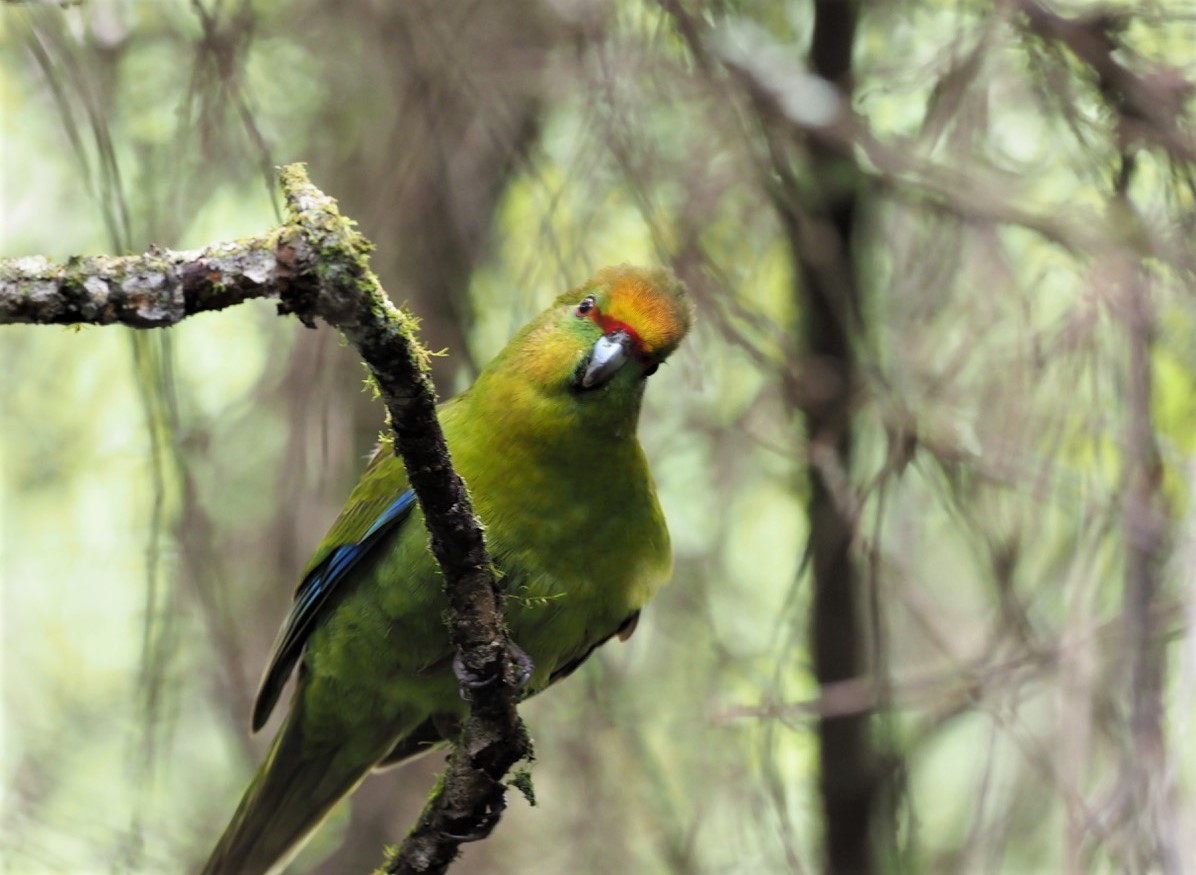
With thanks to support from the local Makarora community and funding from the Speights Award (2018) supporting the local environment.
